African Flags
Discover the flags of all 51 African nations. From the pan-African colors of Ghana to the unique designs of Seychelles and South Africa, explore the rich symbolism and history behind each flag.
← Back to All CountriesAll African Countries
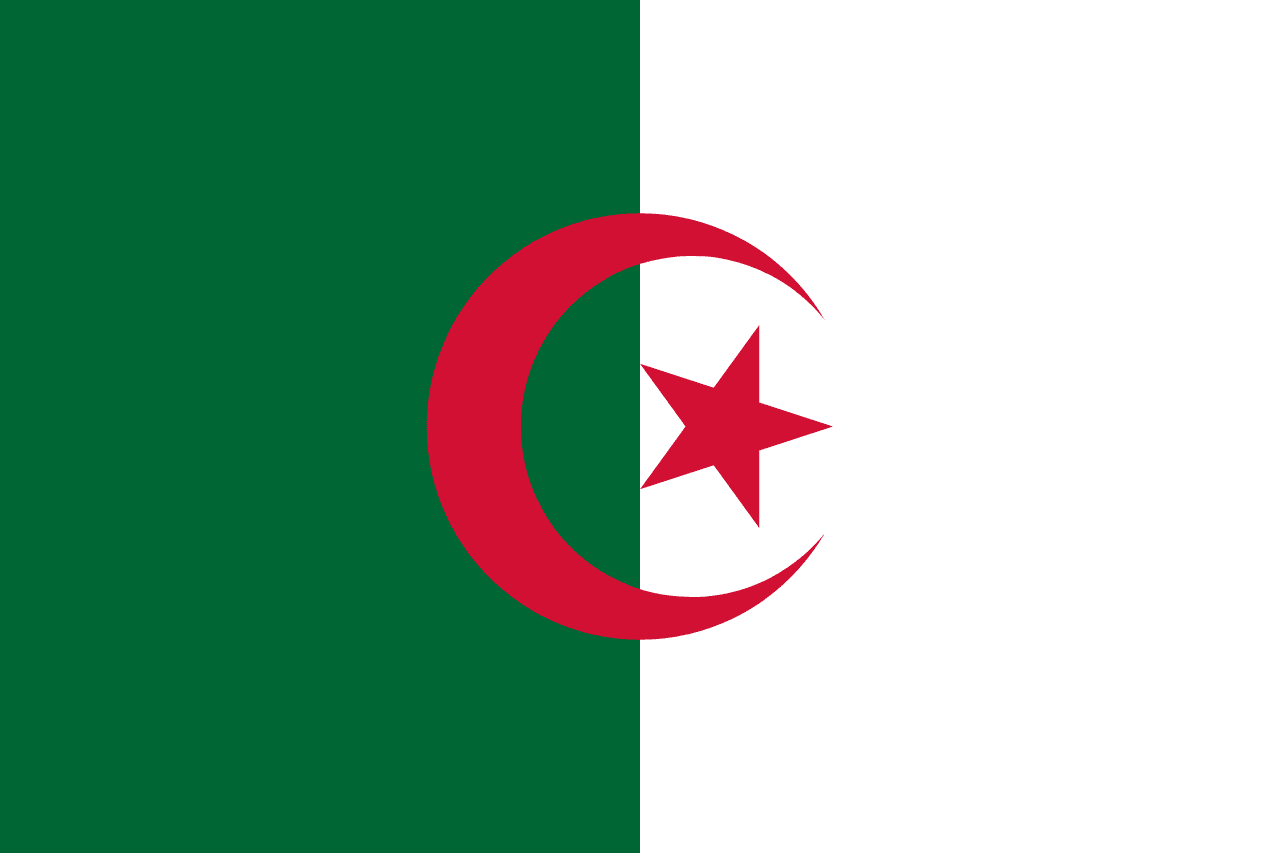
Algeria
Adopted 1962
Two equal vertical stripes of green and white with a red crescent and five-pointed star centered on the dividing line, representing Islam, peace, and the blood of martyrs who died for independence.

Angola
Adopted 1975
Two horizontal stripes of red and black with a yellow emblem in the center featuring a machete, star, and half gear wheel, representing the blood shed for independence, the African heritage, and the tools of liberation - agricultural work, socialism, and industrial progress.
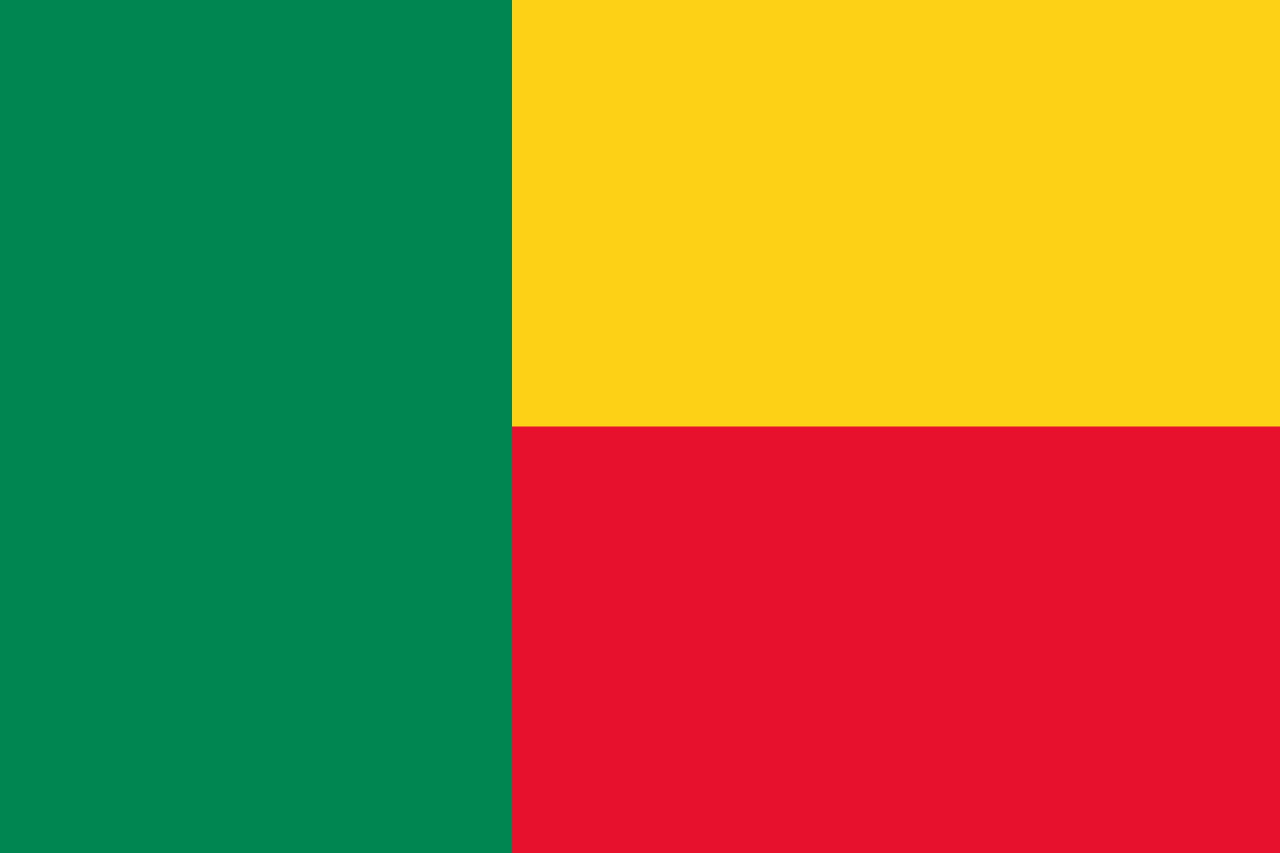
Benin
Adopted 1990
A vertical green stripe on the hoist side with horizontal yellow and red stripes on the fly side, representing the forests and hope of the nation, the savannah and mineral wealth, and the courage and blood of the ancestors, using the Pan-African colors that symbolize African unity and liberation.
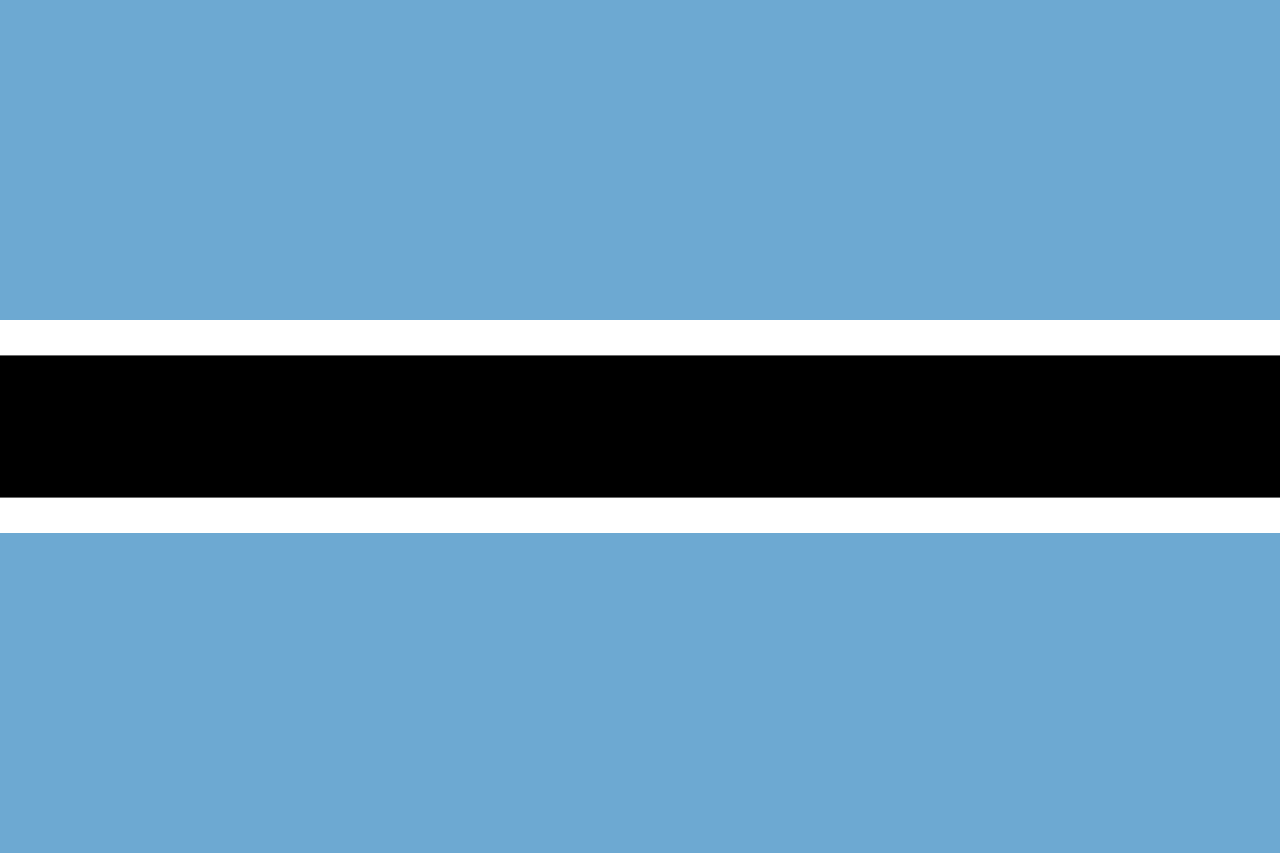
Botswana
Adopted 1966
Light blue field with a central black horizontal stripe bordered by thin white stripes, representing the life-giving rains, racial harmony, and the zebra that symbolizes the coexistence of black and white people in peace.
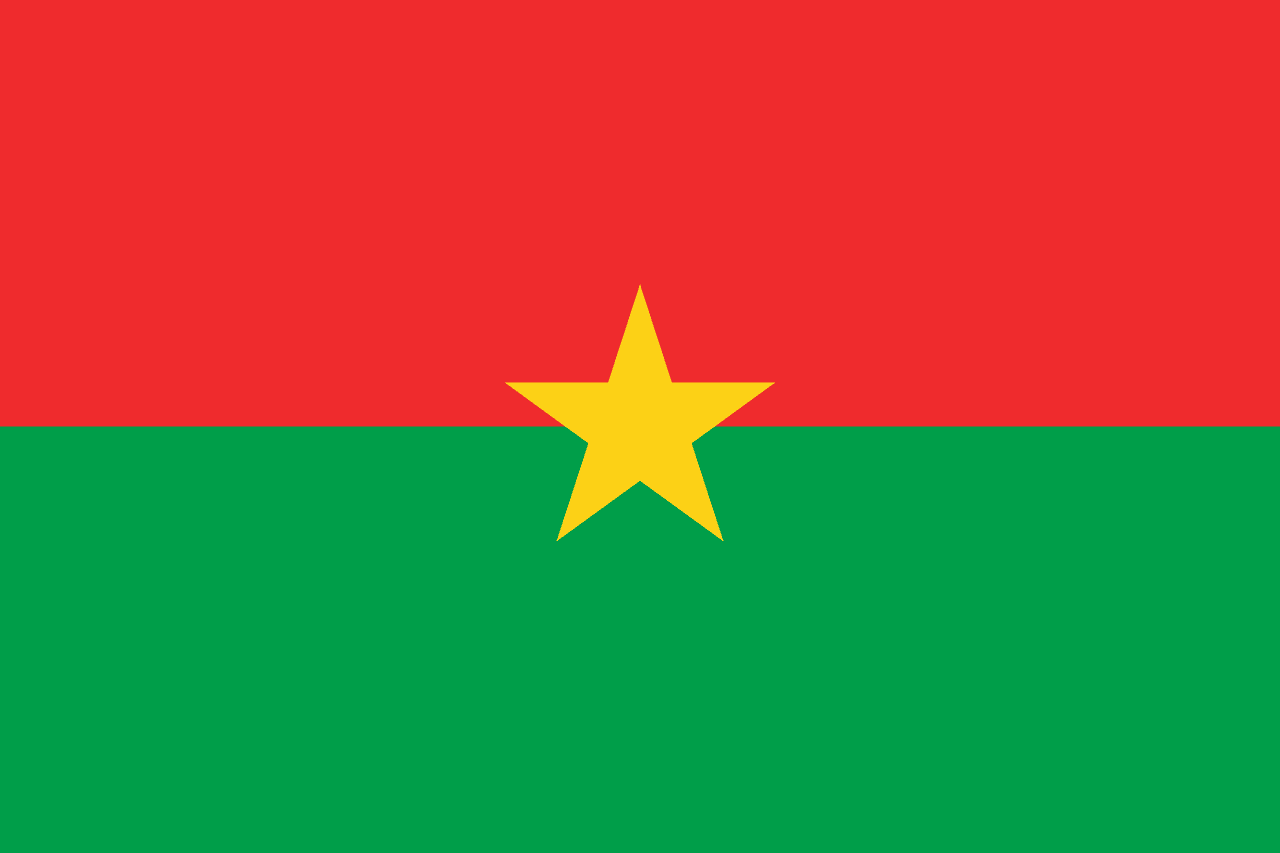
Burkina Faso
Adopted 1984
Two horizontal bands of red and green with a yellow five-pointed star in the center, representing the revolutionary ideals, agricultural wealth, and mineral resources of the nation, adopted when the country changed its name from Upper Volta.
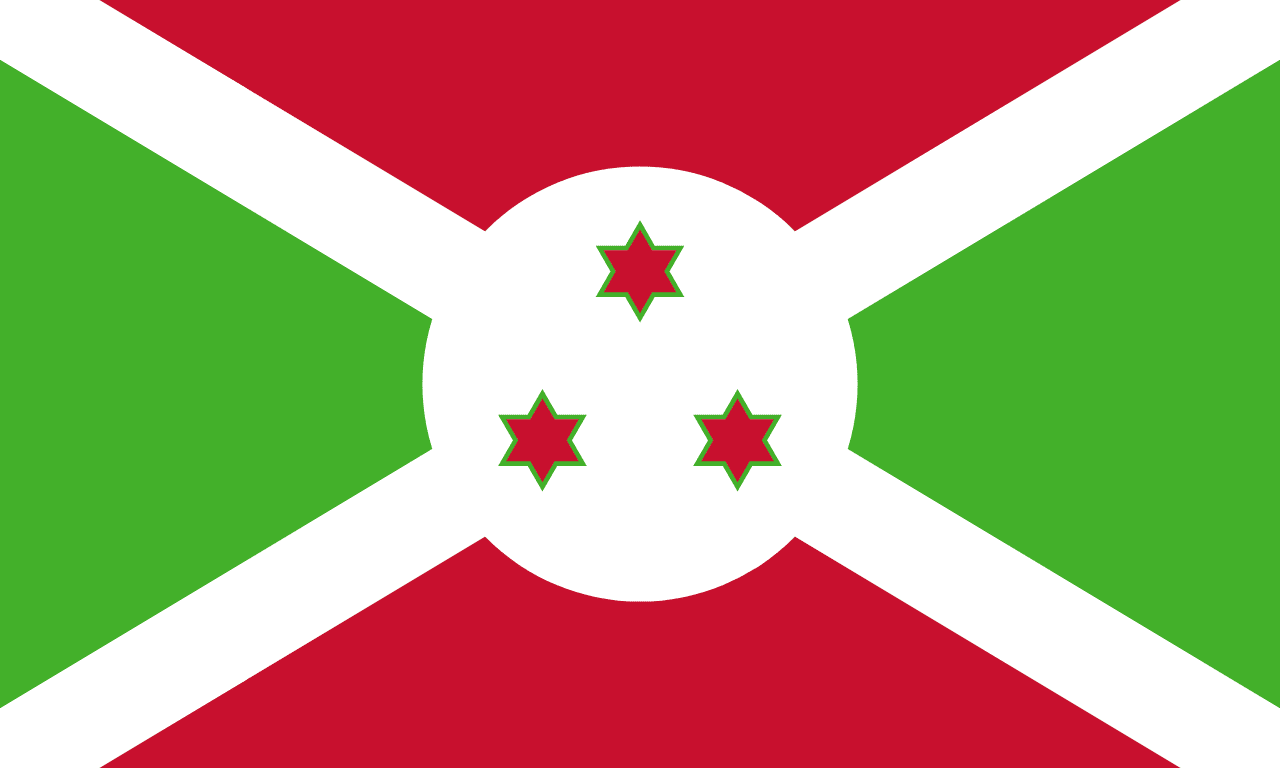
Burundi
Adopted 1967
A white diagonal cross dividing the flag into alternating red and green triangles, with three red stars outlined in green in the center circle, representing unity, work, progress, and the three ethnic groups of Burundi.
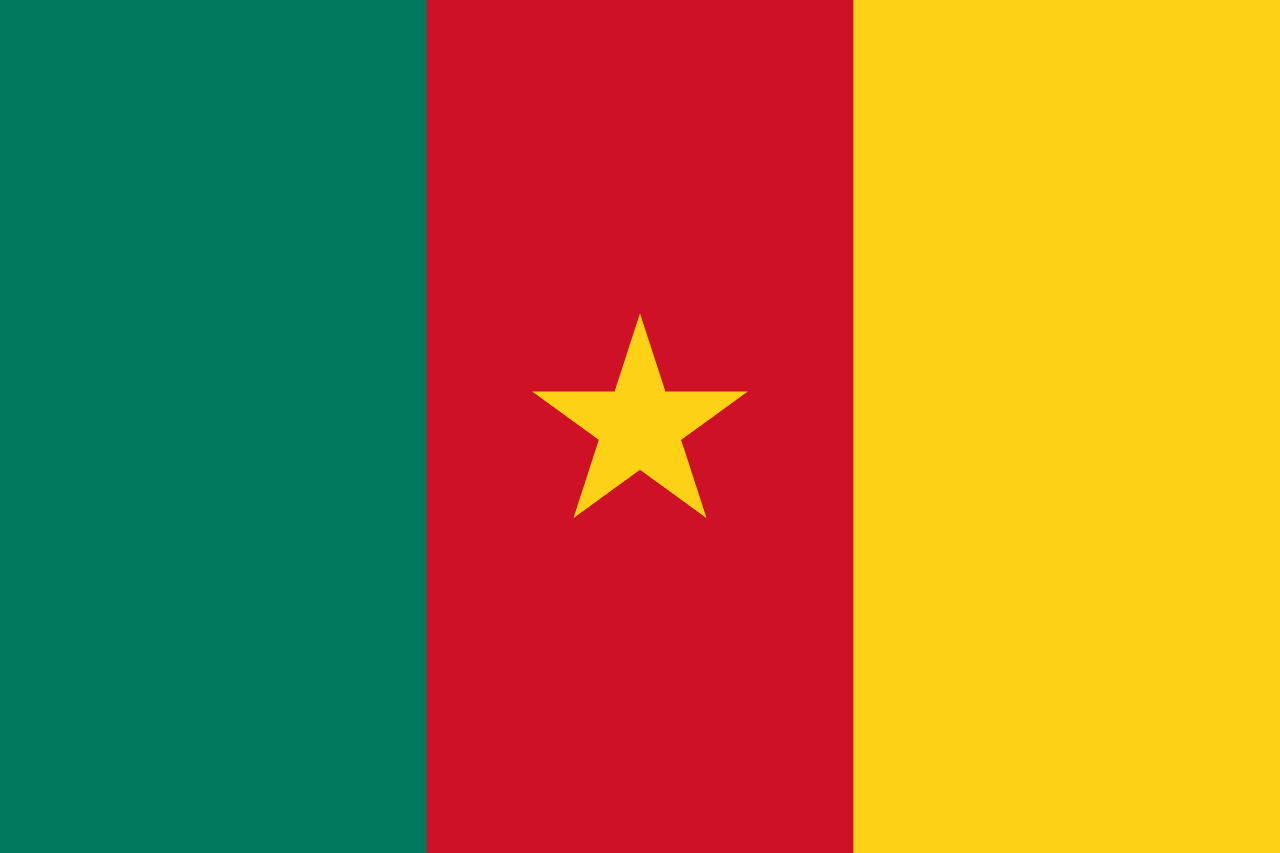
Cameroon
Adopted 1975
Three vertical stripes of green, red, and yellow with a yellow five-pointed star in the center of the red stripe, representing the forests, unity, the sun and savanna, and the unity of the diverse peoples of Cameroon.
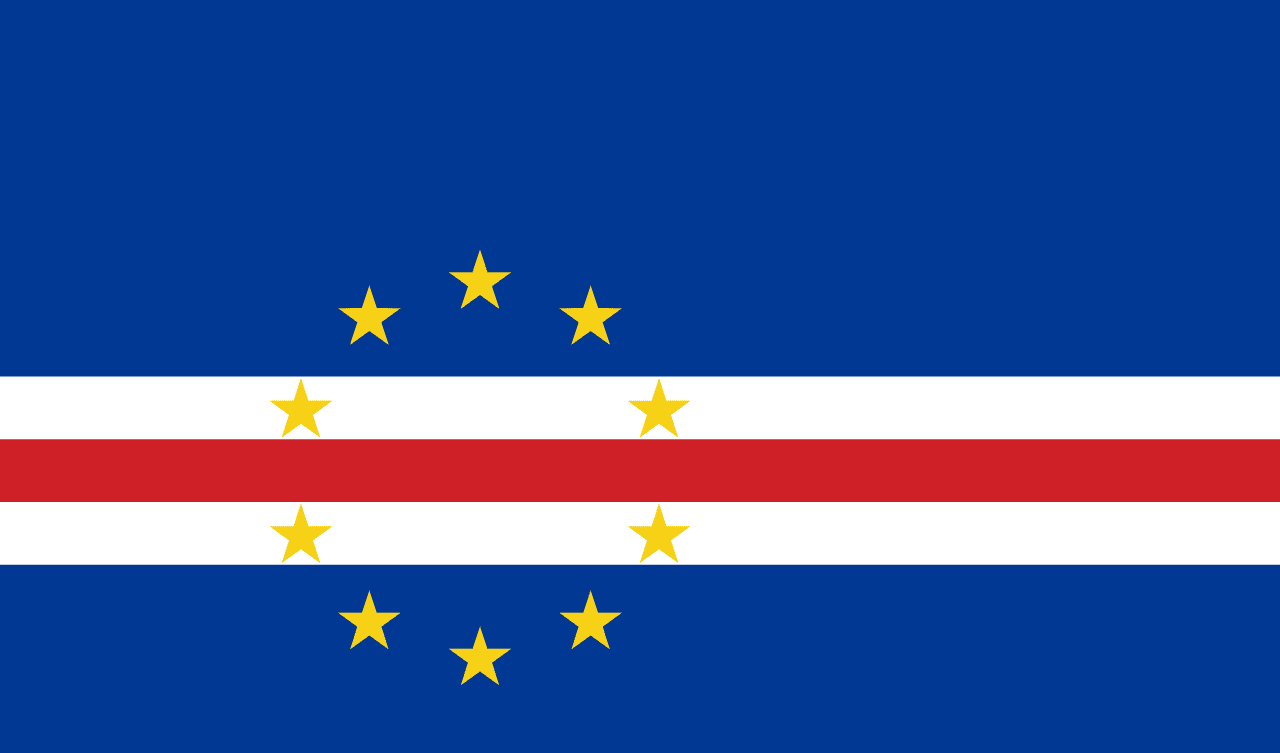
Cape Verde
Adopted 1992
A blue field with two white stripes, one red stripe, and ten yellow five-pointed stars arranged in a circle, representing the Atlantic Ocean, peace, the struggle for independence, and the ten islands of this West African archipelago.
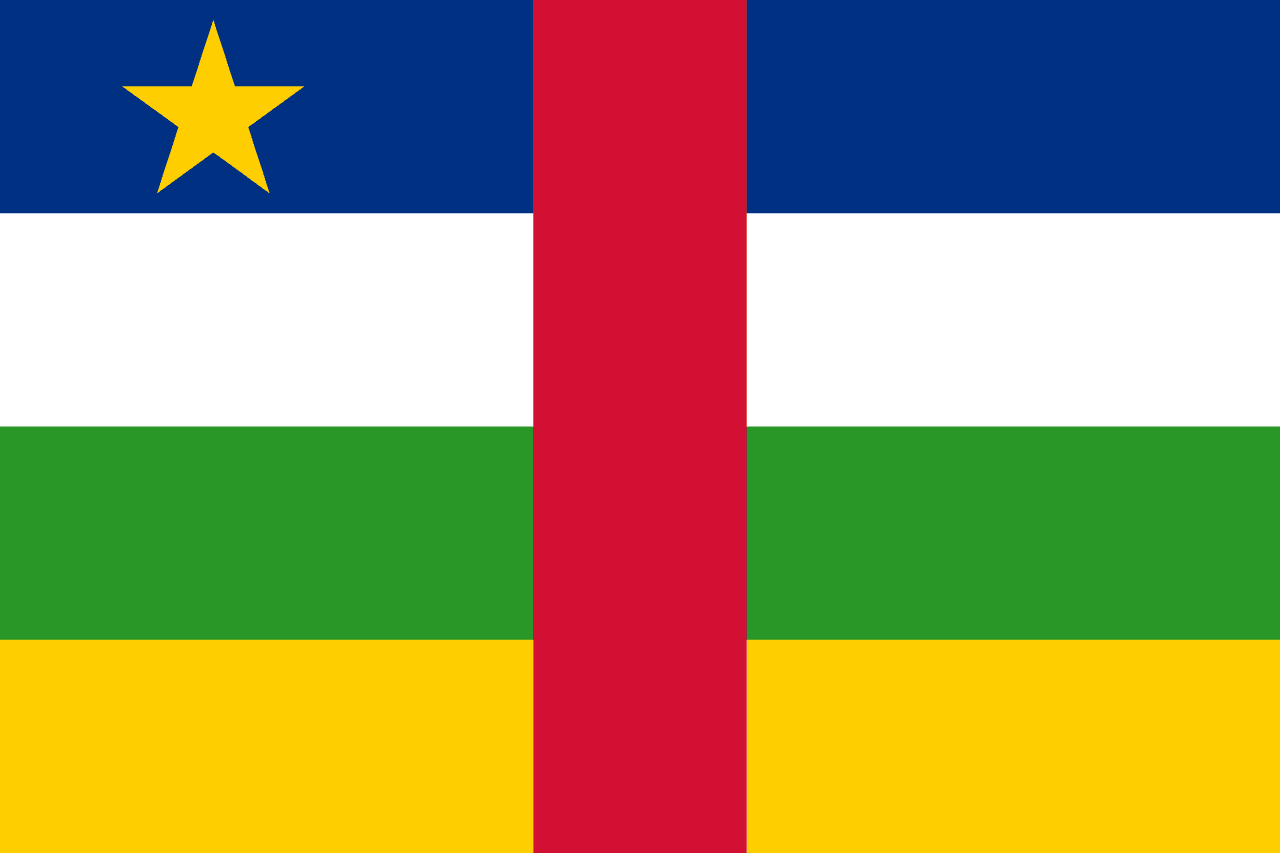
Central African Republic
Adopted 1958
Four horizontal stripes of blue, white, green, and yellow with a vertical red stripe through the center and a yellow five-pointed star in the upper hoist, combining Pan-African and French colors to represent unity and independence.
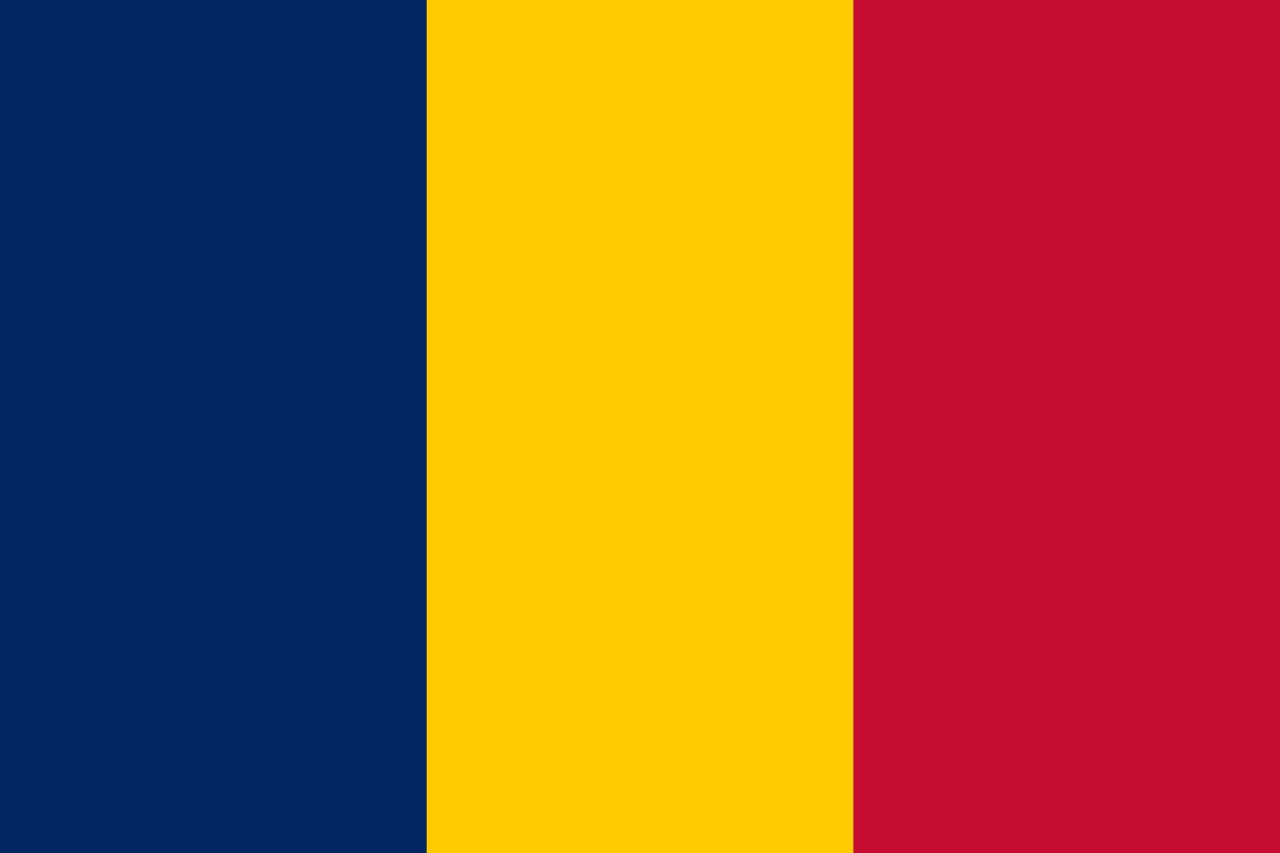
Chad
Adopted 1959
Three vertical stripes of blue, yellow, and red representing Chad's geographic diversity from the waters and sky in the north to the desert and savannas, adopted on the eve of independence from France.
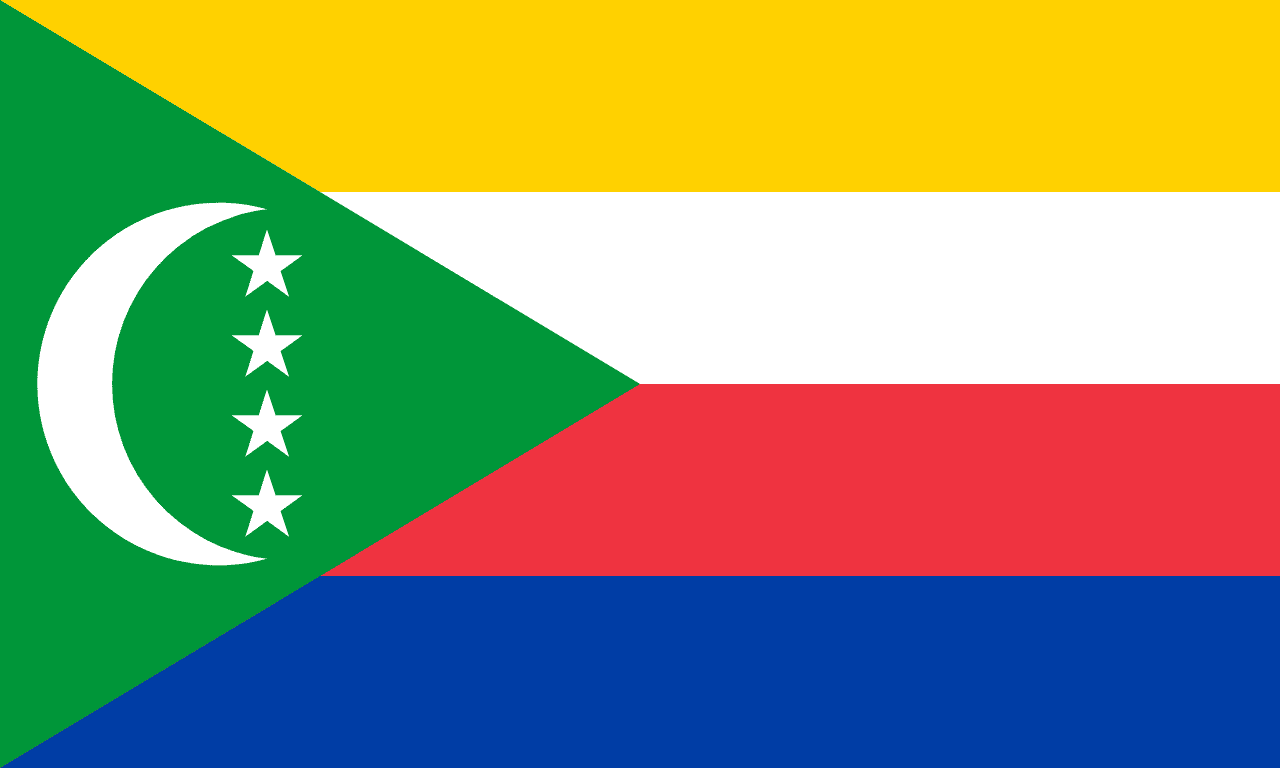
Comoros
Adopted 2002
Four horizontal stripes of yellow, white, red, and blue with a green triangle at the hoist containing a white crescent and four white stars, representing the four islands, Islamic faith, and the pan-African heritage of this Indian Ocean archipelago.
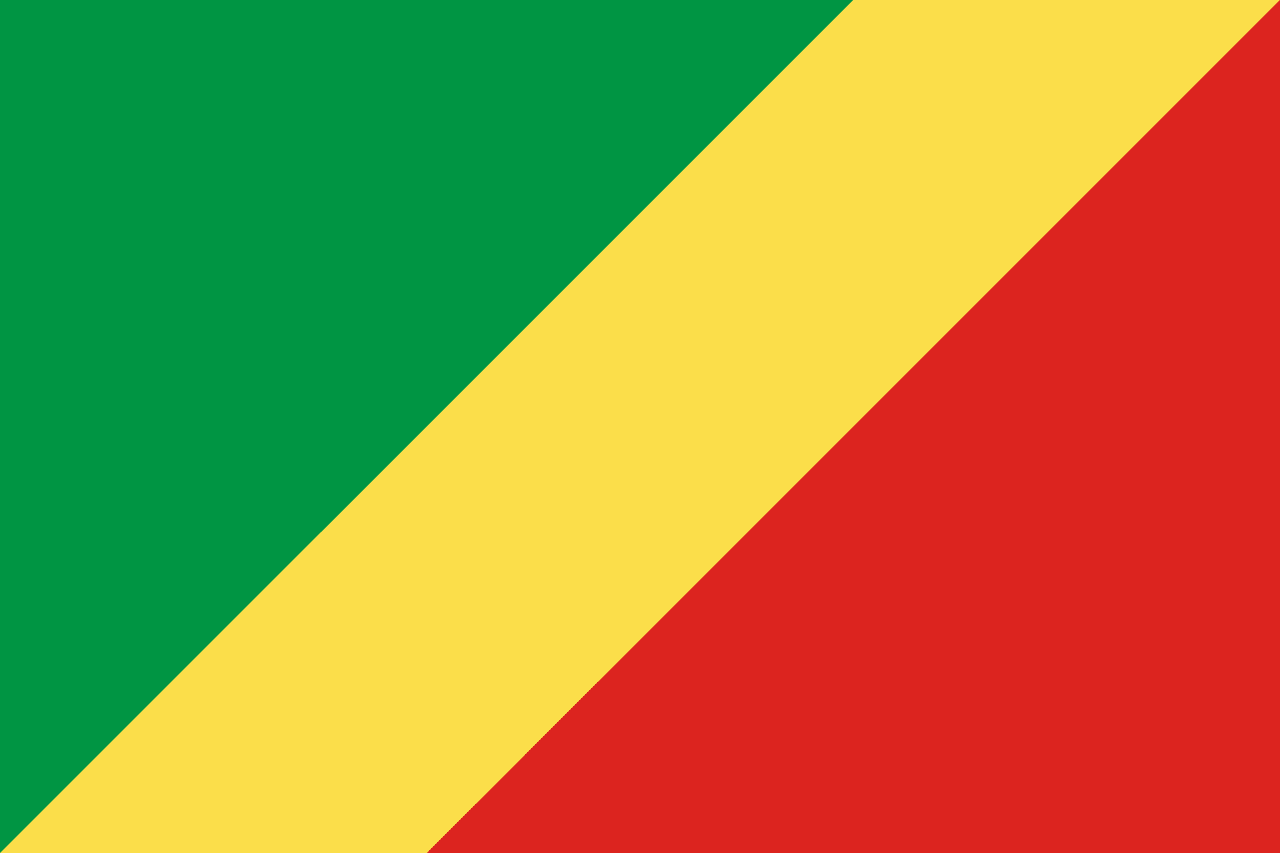
Republic of the Congo
Adopted 1991
A diagonal tricolor with green in the upper hoist, red in the lower fly, and yellow diagonal stripe separating them, representing the forests, the struggle for independence, and the friendship and nobility of the Congolese people.
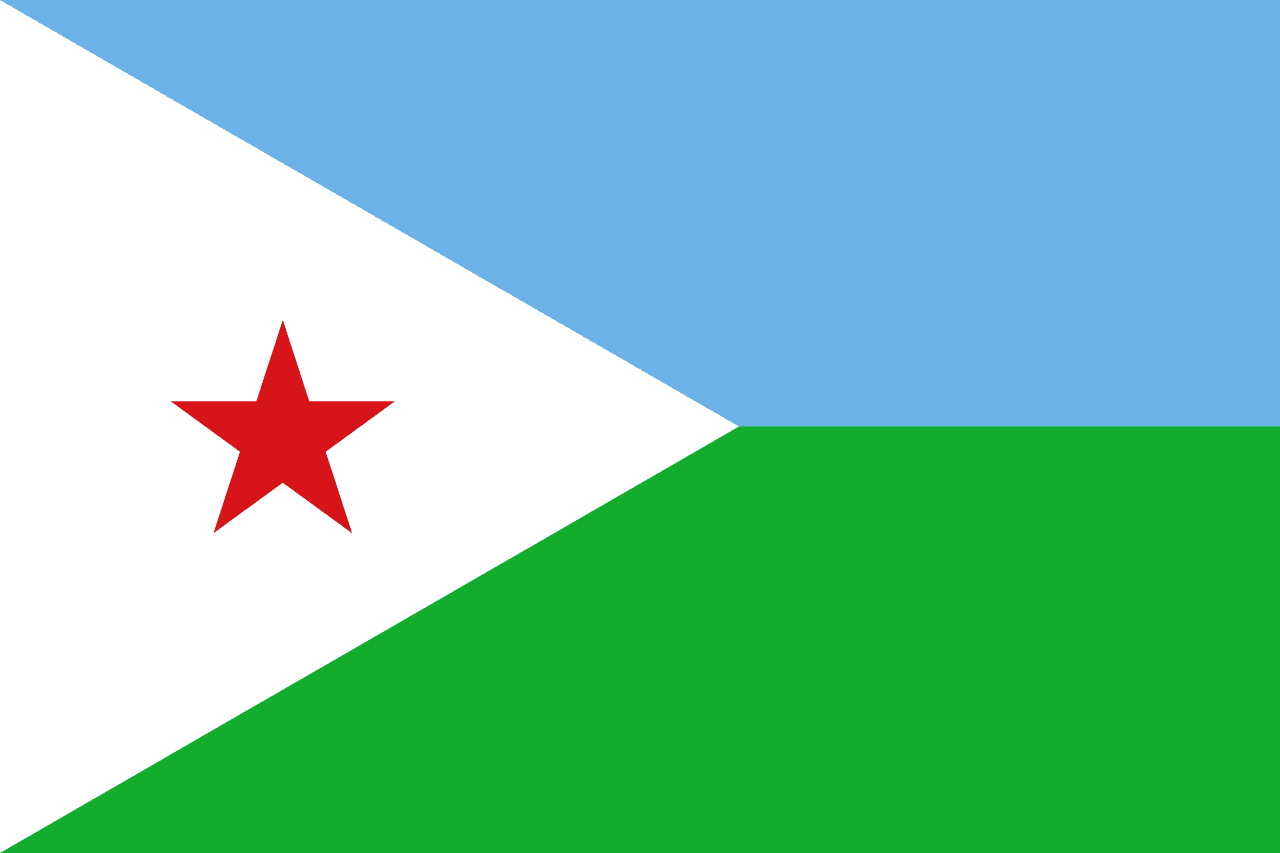
Djibouti
Adopted 1977
A light blue field with a white triangle at the hoist containing a red five-pointed star, and a green lower stripe, representing the sky and sea, the Issa people, peace, unity, and the Afar people of this strategic Horn of Africa nation.

Egypt
Adopted 1984
Three horizontal stripes of red, white, and black with the golden Eagle of Saladin centered on the white stripe, representing the struggle for freedom, purity and bright future, the dark past of oppression, and the strength of the Arab Republic of Egypt.
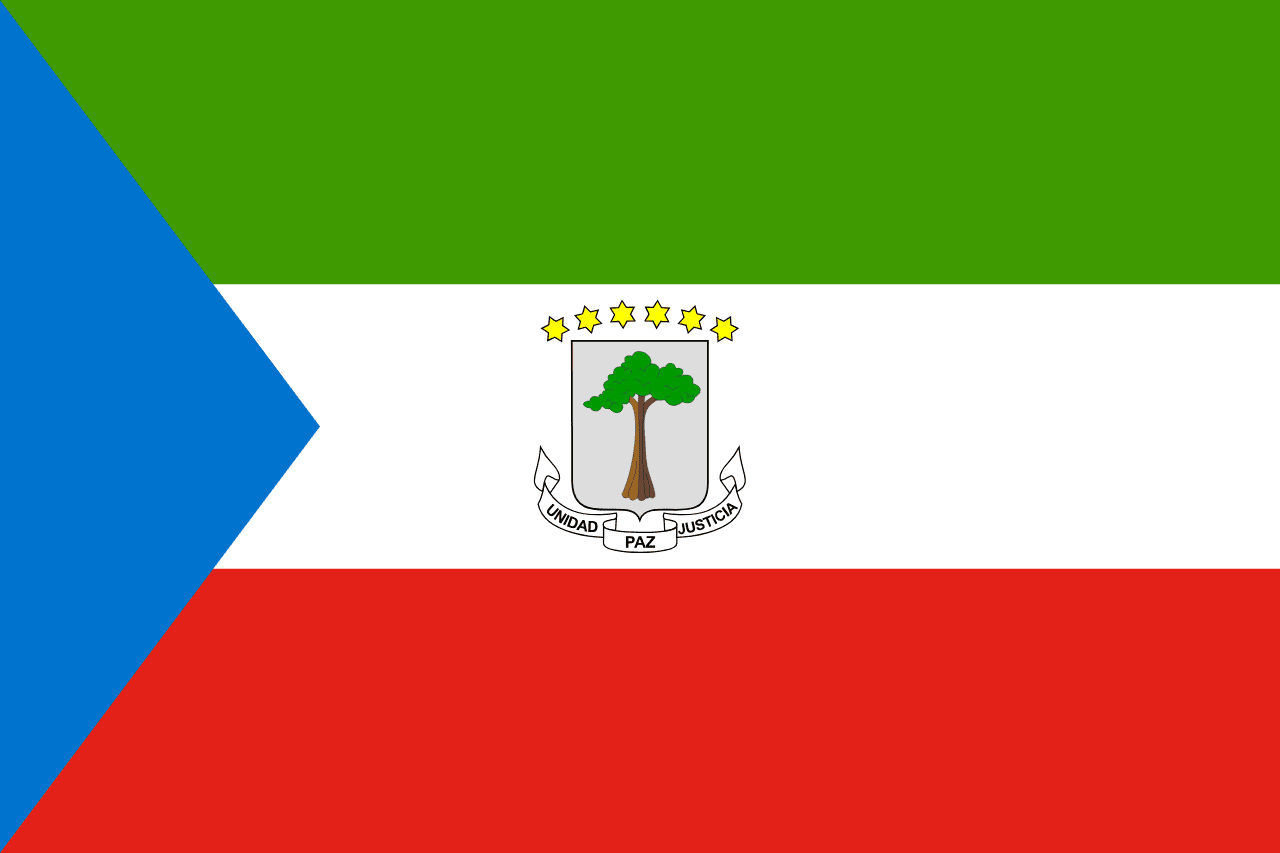
Equatorial Guinea
Adopted 1968
Three horizontal stripes of green, white, and red with a blue triangle at the hoist and the national coat of arms in the center, representing the country's forests, peace, independence struggle, and maritime heritage.
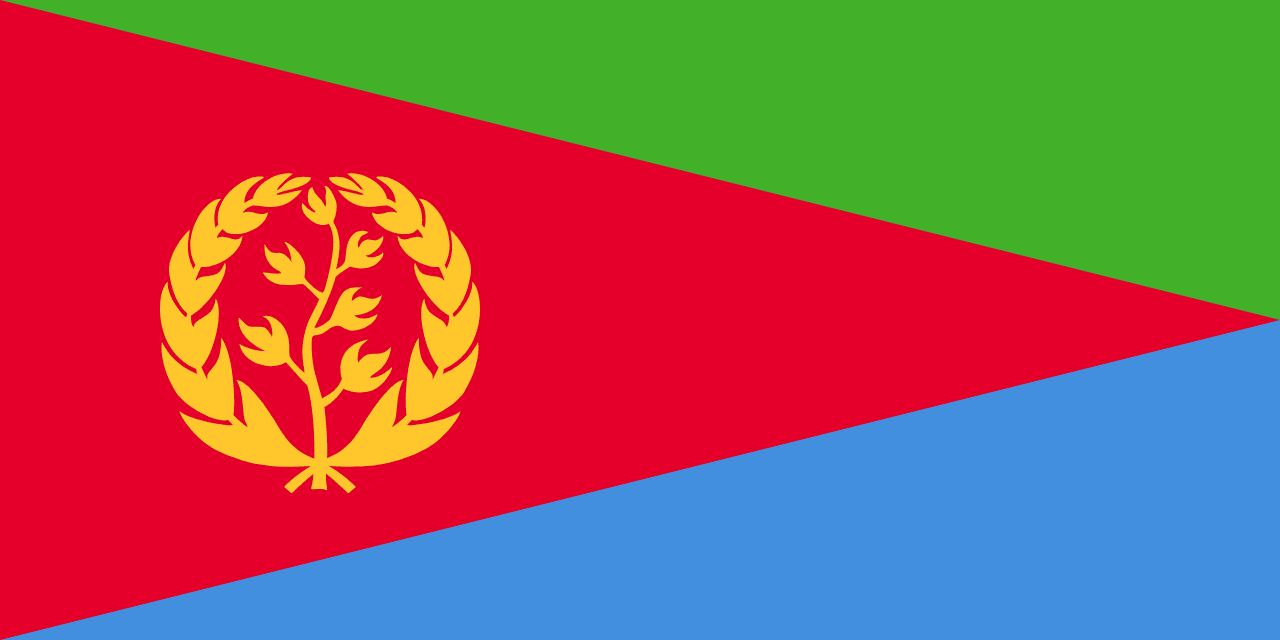
Eritrea
Adopted 1995
A red triangle at the hoist with a golden olive branch and wreath, adjacent to green and blue triangular sections, representing the struggle for independence, agricultural potential, maritime heritage, and hopes for peace.
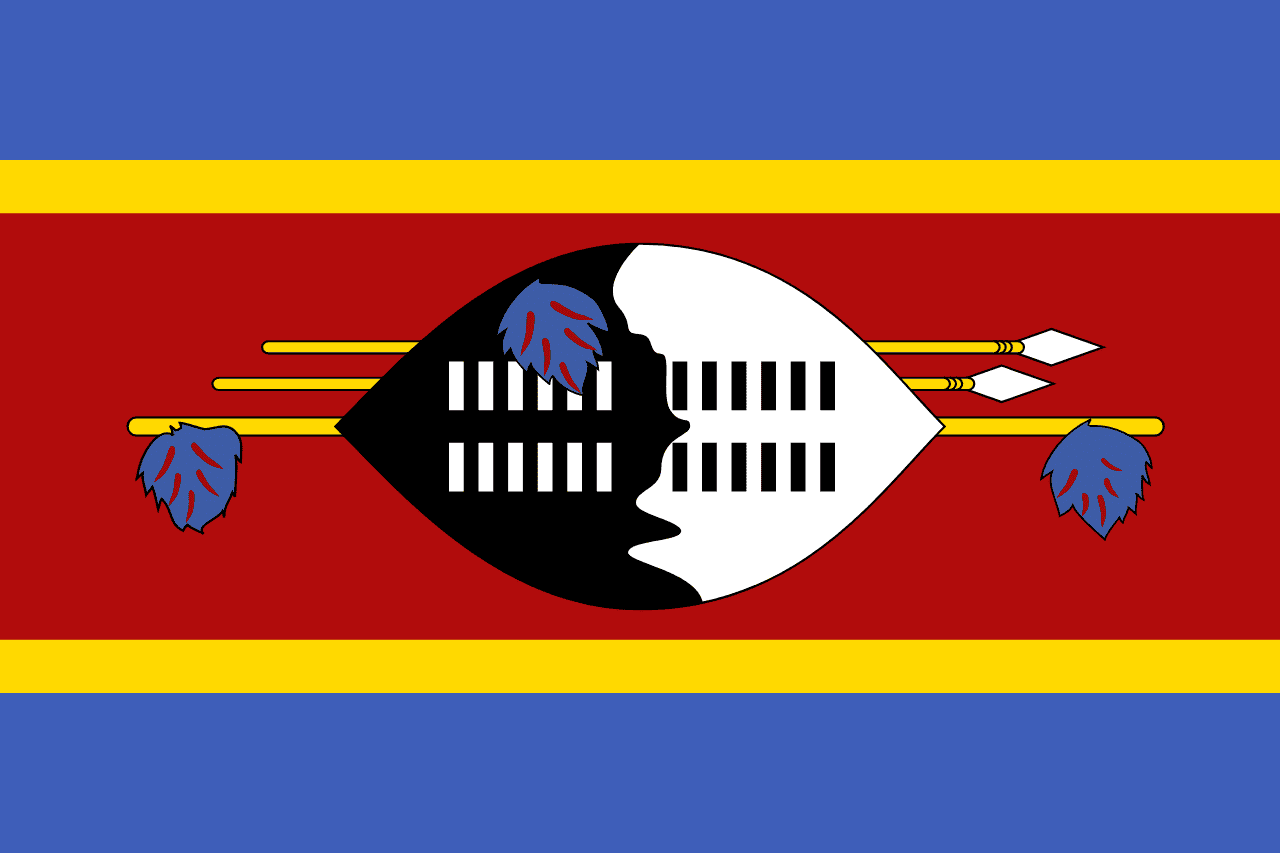
Eswatini
Adopted 1968
Five horizontal stripes of blue, yellow, red, yellow, and blue with a traditional Swazi shield and two spears overlaid on the center red stripe, representing peace, mineral wealth, past struggles, and the protection of the kingdom.
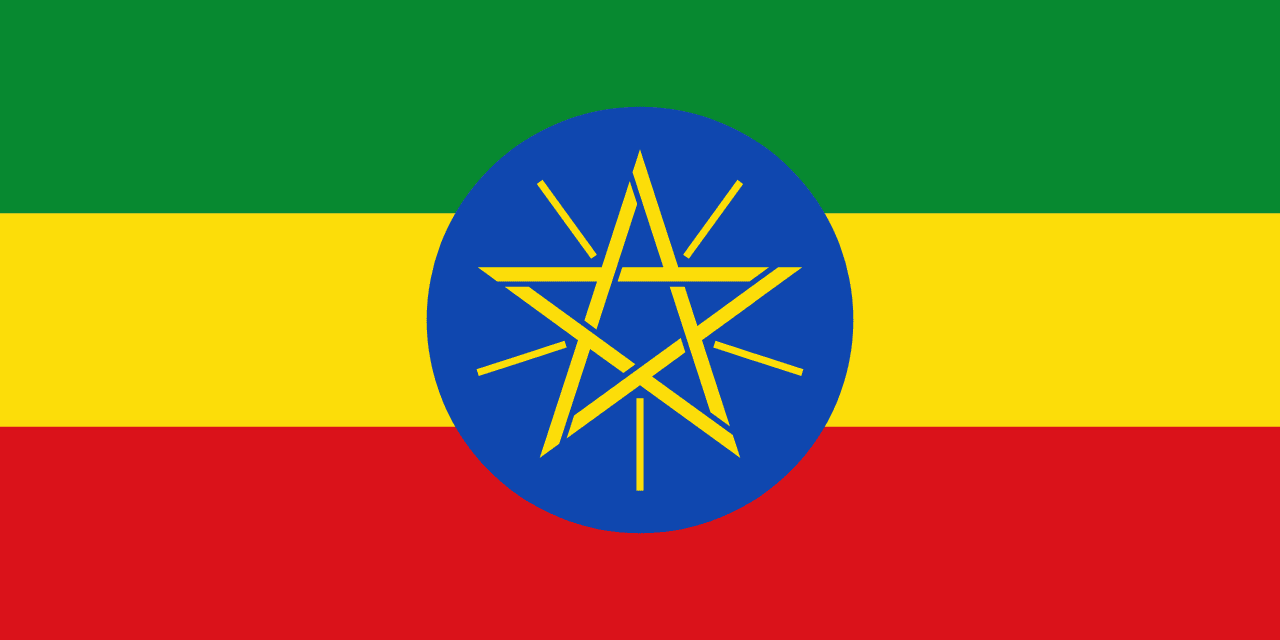
Ethiopia
Adopted 1996
Three horizontal stripes of green, yellow, and red with a blue circle containing a yellow five-pointed star in the center, representing the original Pan-African colors, the diversity and unity of Ethiopia's peoples, and the country's ancient independence.
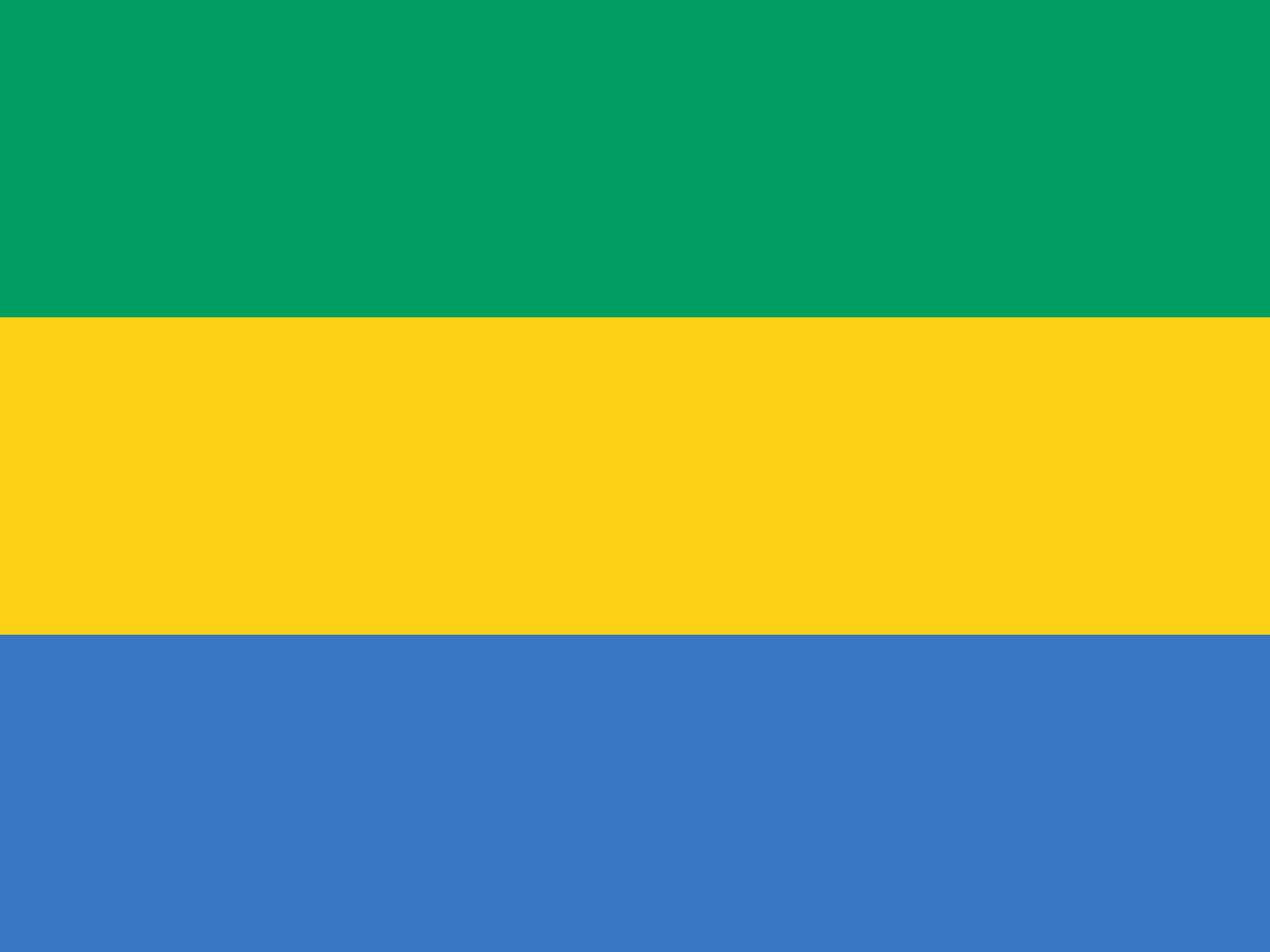
Gabon
Adopted 1960
Three horizontal stripes of green, yellow, and blue representing Gabon's equatorial forests, the equator itself, and the Atlantic Ocean, adopted upon independence from France.
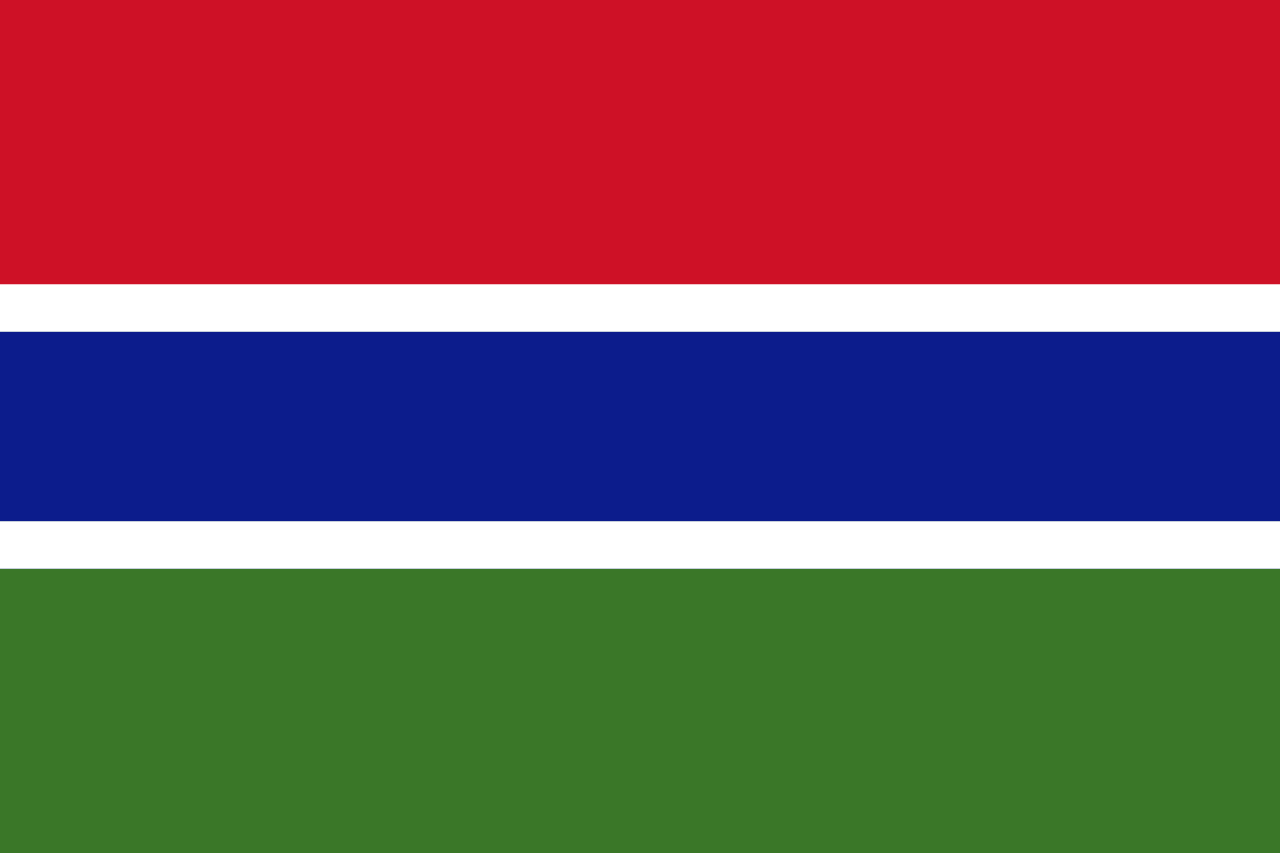
Gambia
Adopted 1965
Three horizontal stripes of red, blue, and green separated by thin white stripes, representing the sun, the Gambia River, agriculture, and peace, symbolizing the natural beauty and harmony of the smallest mainland African nation.

Ghana
Adopted TBD
The flag of Ghana and its meaning.
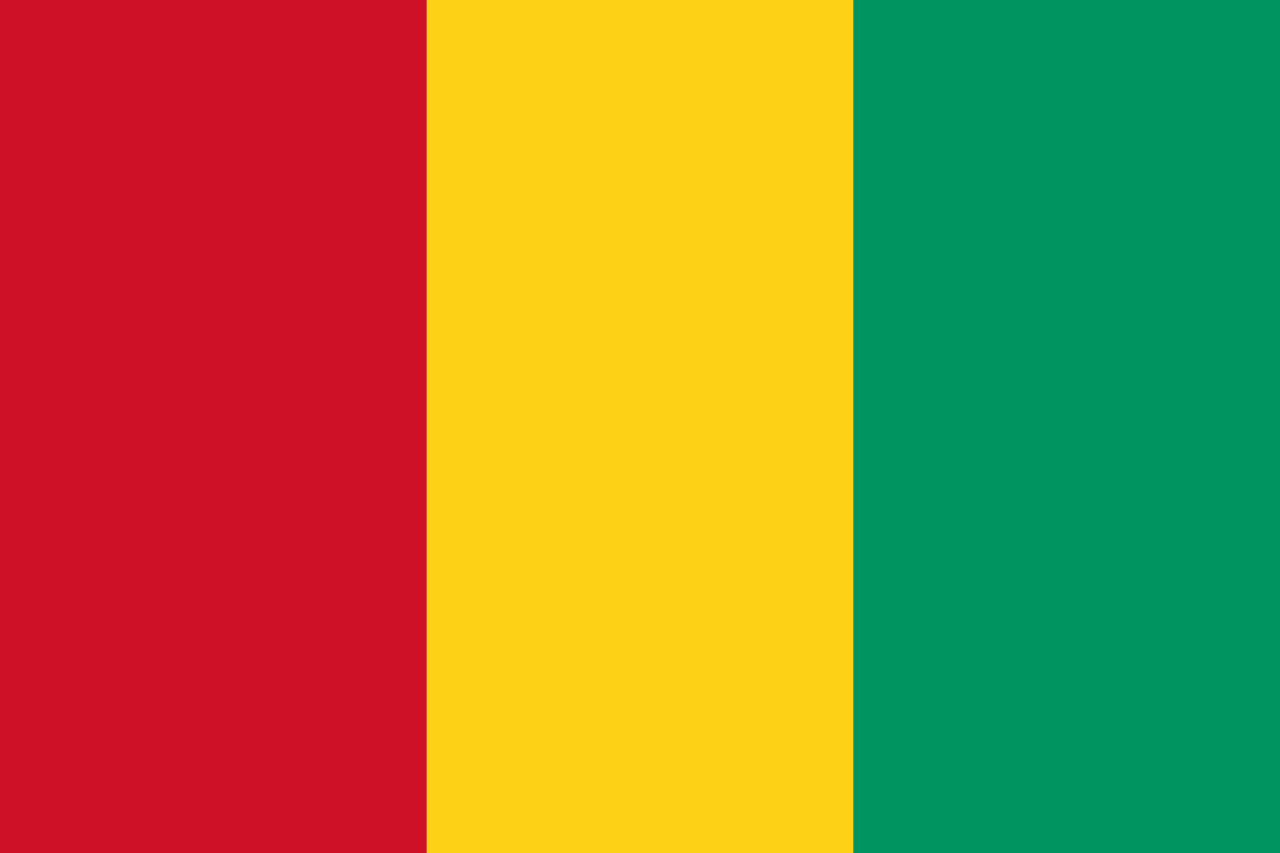
Guinea
Adopted 1958
Three equal vertical stripes of red, yellow, and green representing the Pan-African colors, with red symbolizing sacrifice, yellow representing the sun and mineral wealth, and green representing the country's vegetation and agriculture.
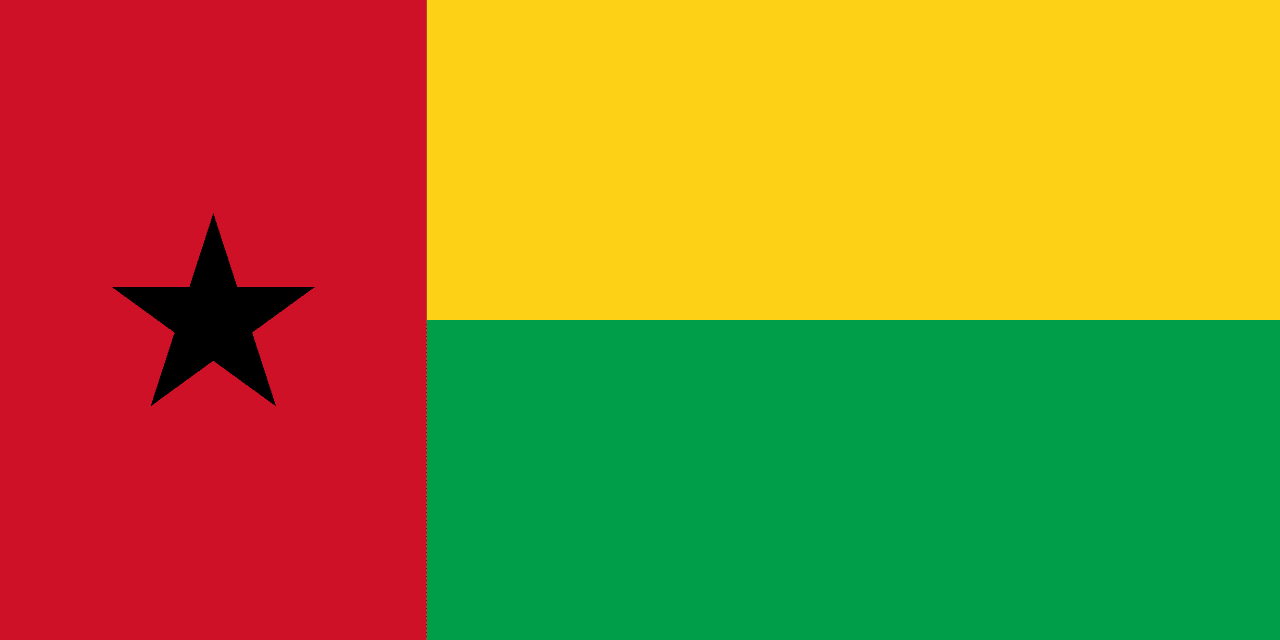
Guinea-Bissau
Adopted 1973
A vertical red stripe at the hoist with a black five-pointed star, and two horizontal stripes of yellow over green on the fly side, representing the liberation struggle, unity, hope, and the agricultural wealth of Guinea-Bissau.
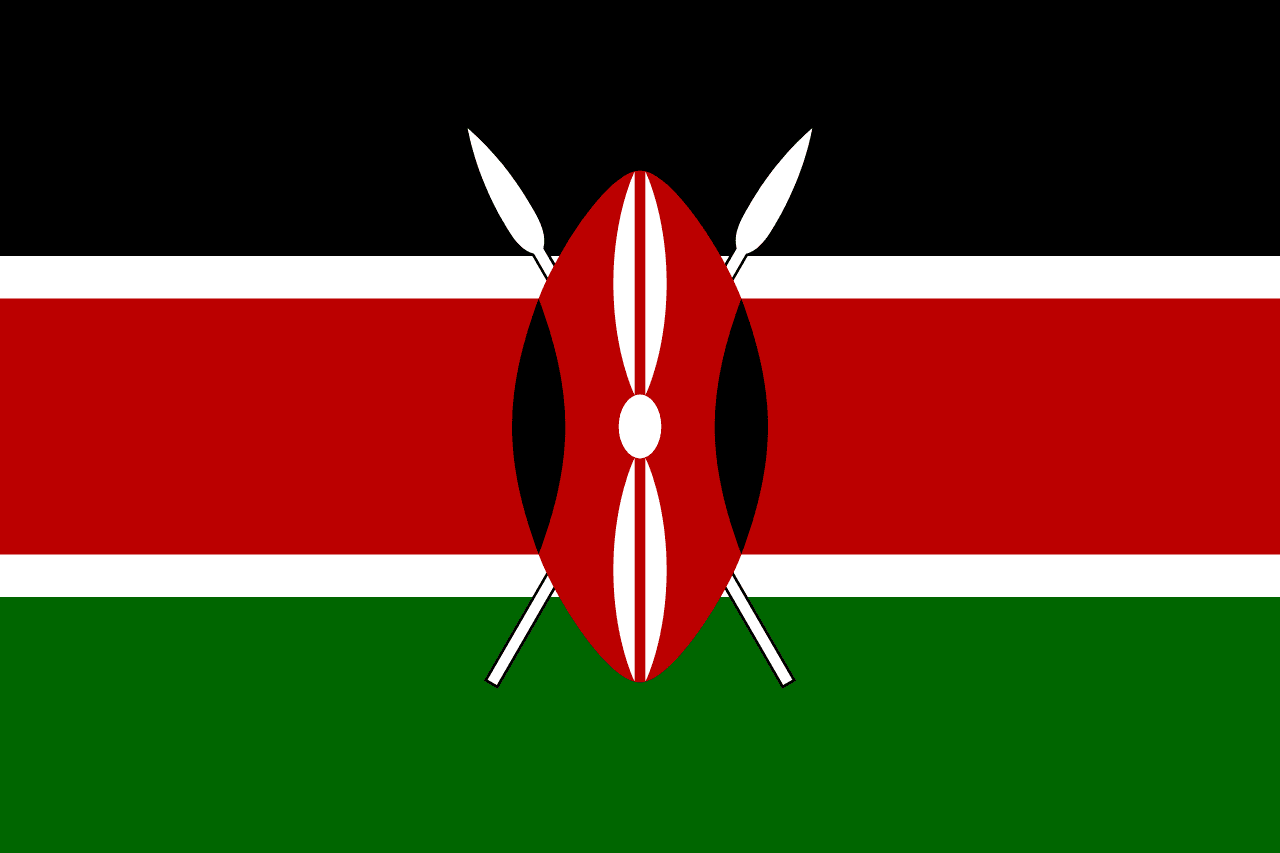
Kenya
Adopted 1963
Three horizontal stripes of black, red, and green separated by narrow white stripes, with a traditional Maasai shield and two crossed spears centered on the flag, representing Kenya's struggle for independence and the defense of freedom.
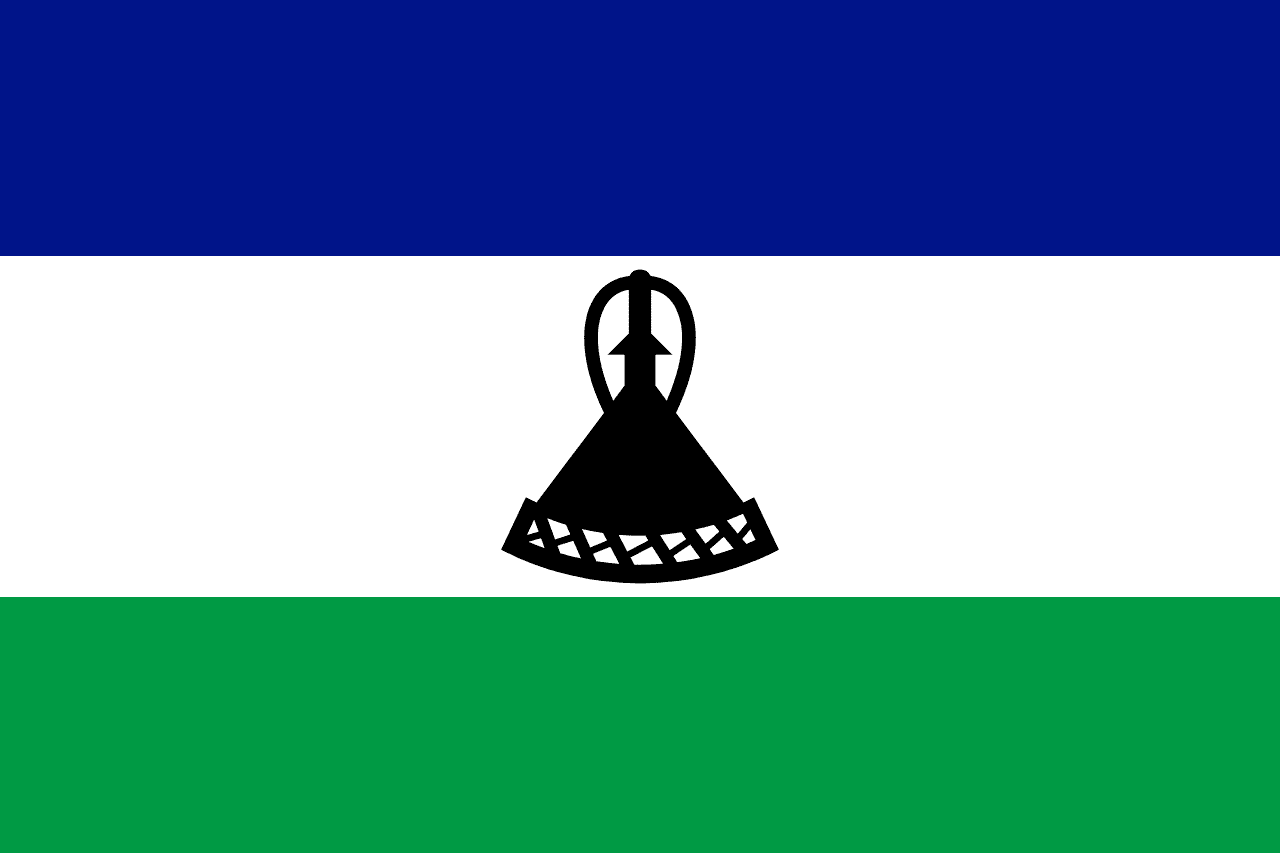
Lesotho
Adopted 2006
Three horizontal stripes of blue, white, and green with a black traditional Basotho hat (mokorotlo) centered on the white stripe, representing peace, rain, prosperity, and the cultural heritage of this mountain kingdom completely surrounded by South Africa.
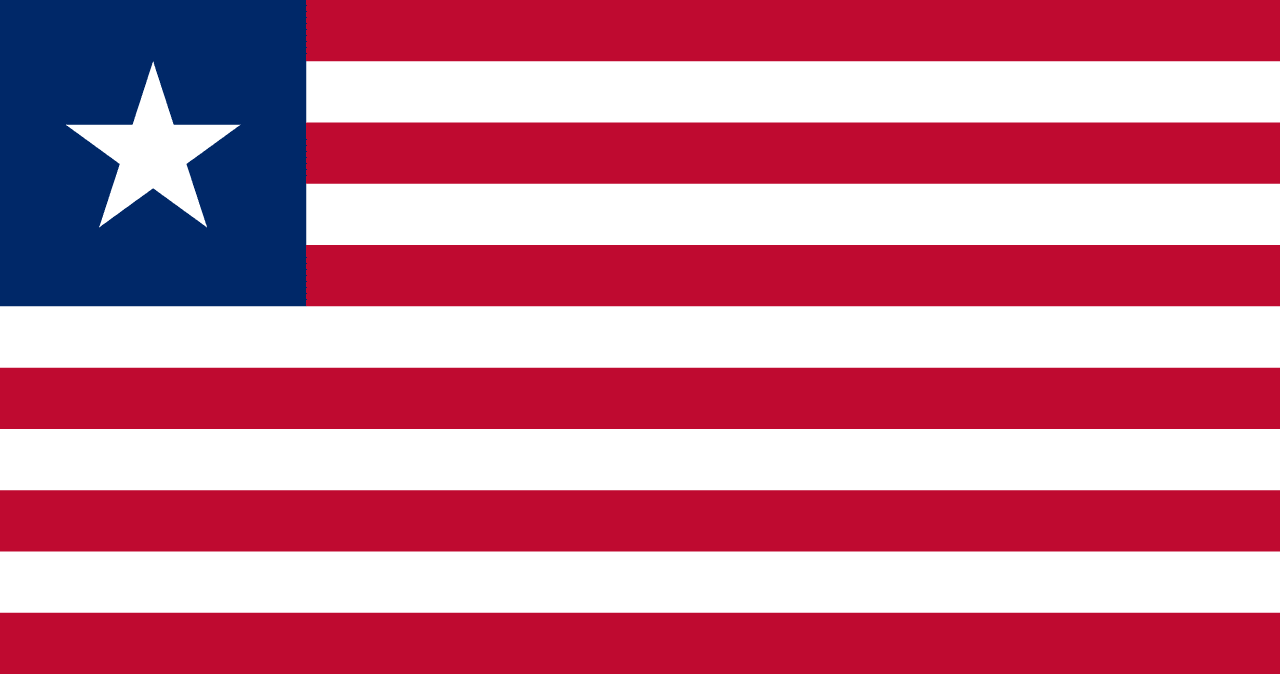
Liberia
Adopted 1847
Eleven alternating red and white stripes with a blue canton containing a single white five-pointed star, representing Africa's first republic founded by freed American slaves and its role as a beacon of freedom on the continent.
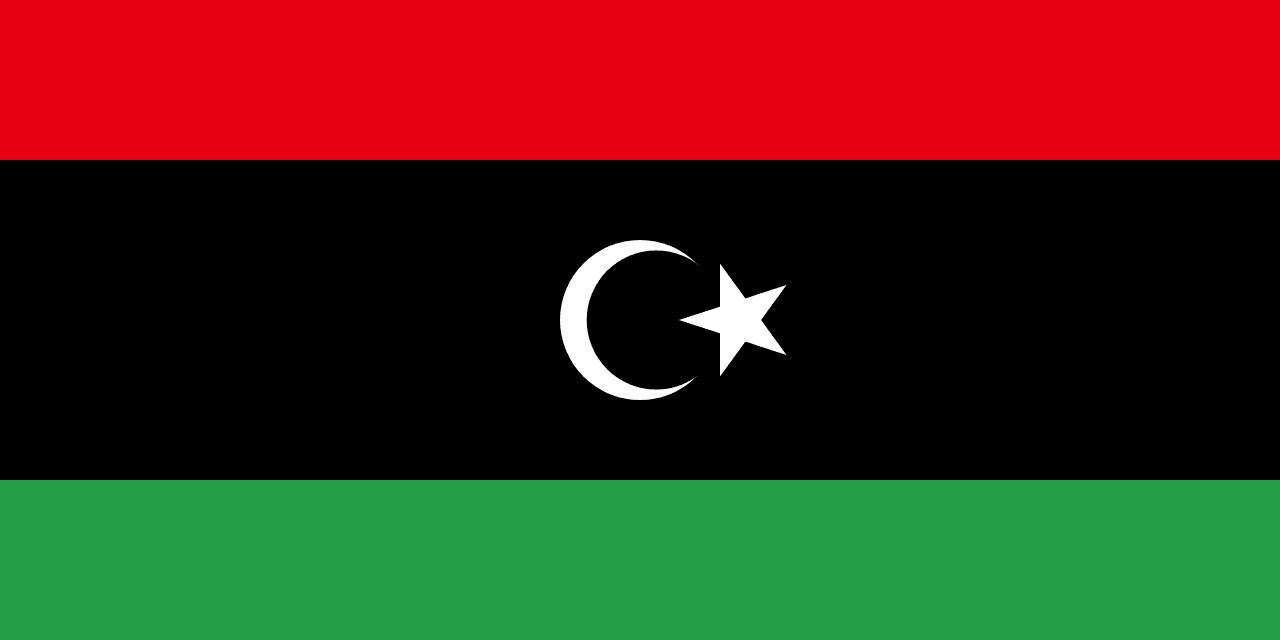
Libya
Adopted 2011
Three horizontal stripes of red, black, and green with a white crescent and five-pointed star centered on the black stripe, representing Libya's return to its royal heritage after the 2011 revolution and the unity of its three historical regions.
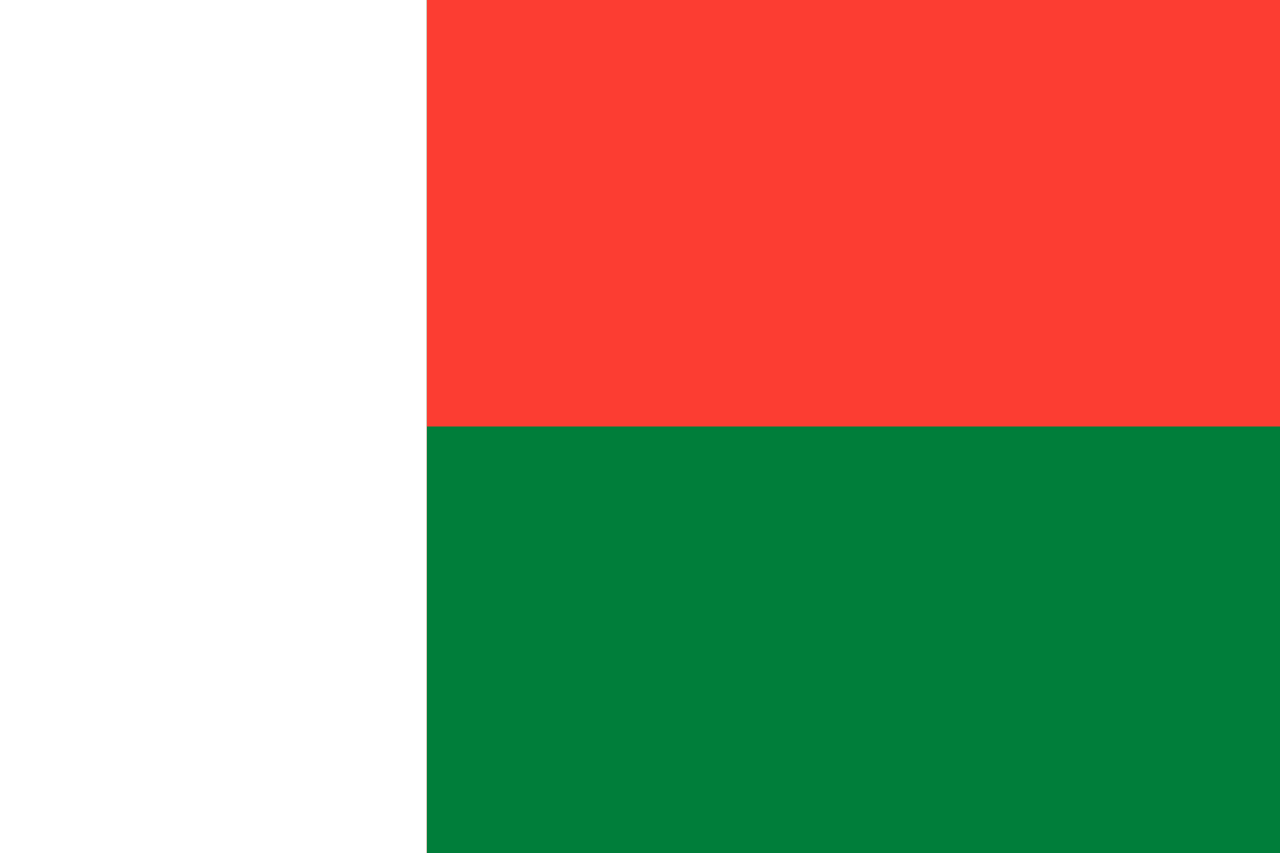
Madagascar
Adopted 1958
A white vertical stripe on the hoist side with two horizontal stripes of red and green on the fly side, representing the diverse heritage of the Malagasy people and the unique natural environment of the world's fourth-largest island.
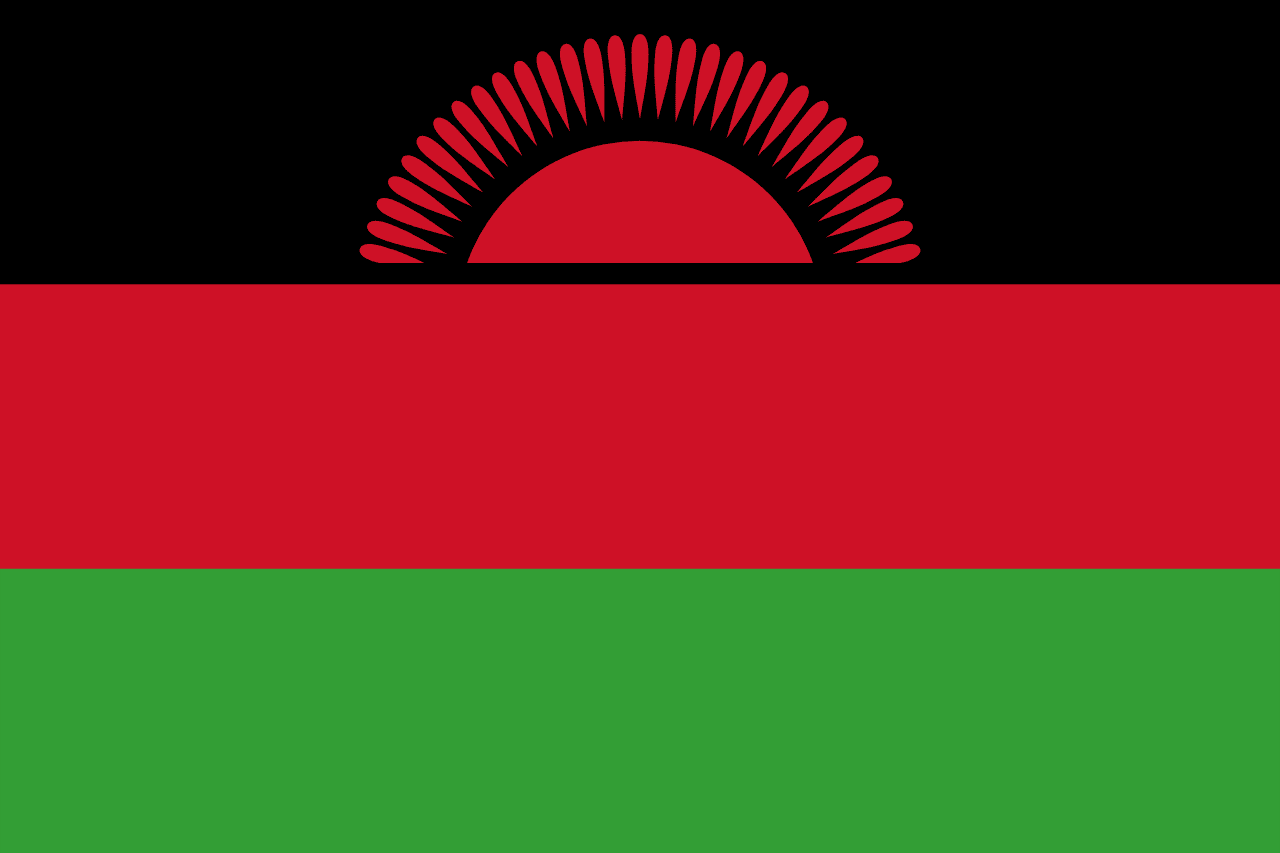
Malawi
Adopted 1964
Three horizontal stripes of black, red, and green with a red rising sun in the upper left corner, representing the African people, the blood of freedom fighters, the land's fertility, and the dawn of freedom and hope.
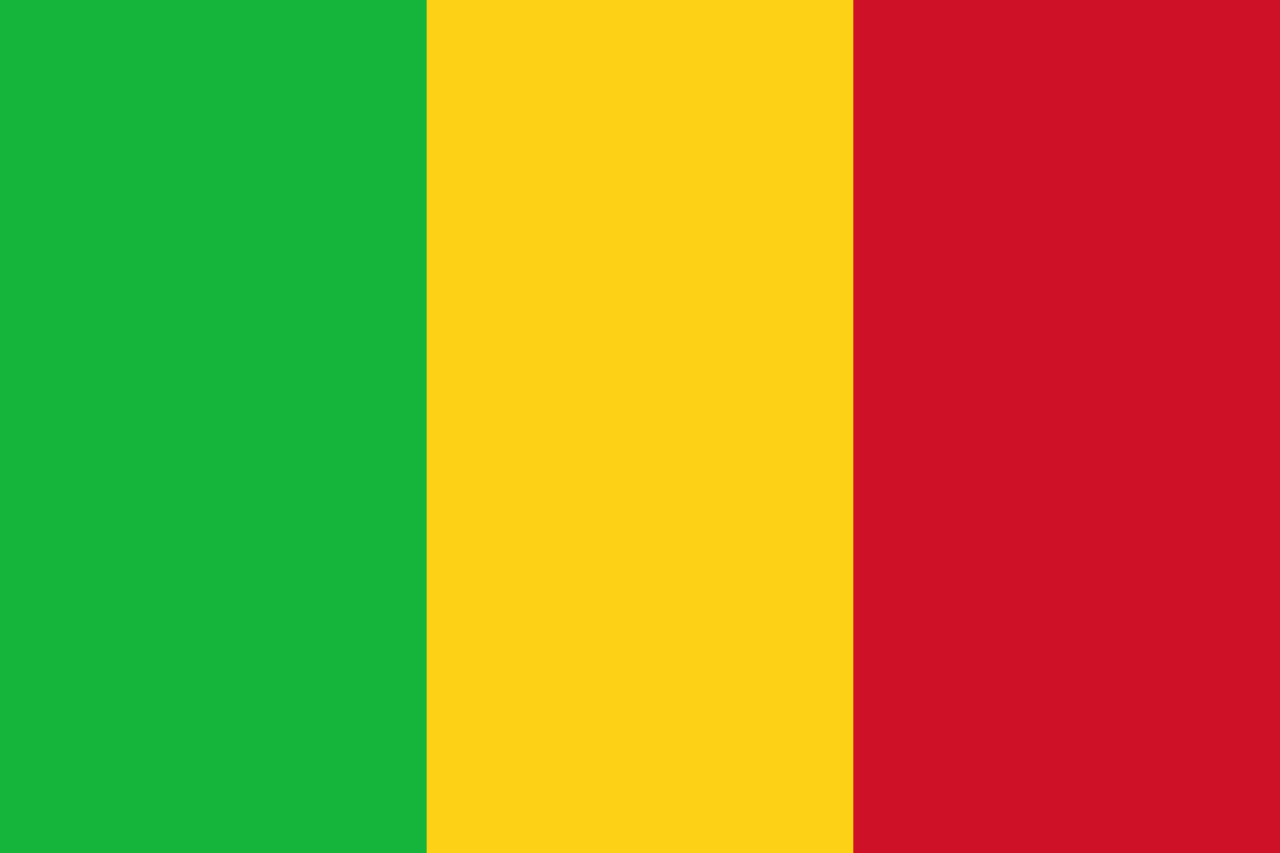
Mali
Adopted 1961
Three vertical stripes of green, yellow, and red representing Mali's agricultural potential, mineral wealth, and the blood of independence fighters, connecting modern Mali to both Pan-African ideals and its legacy as home to medieval Africa's greatest empires.
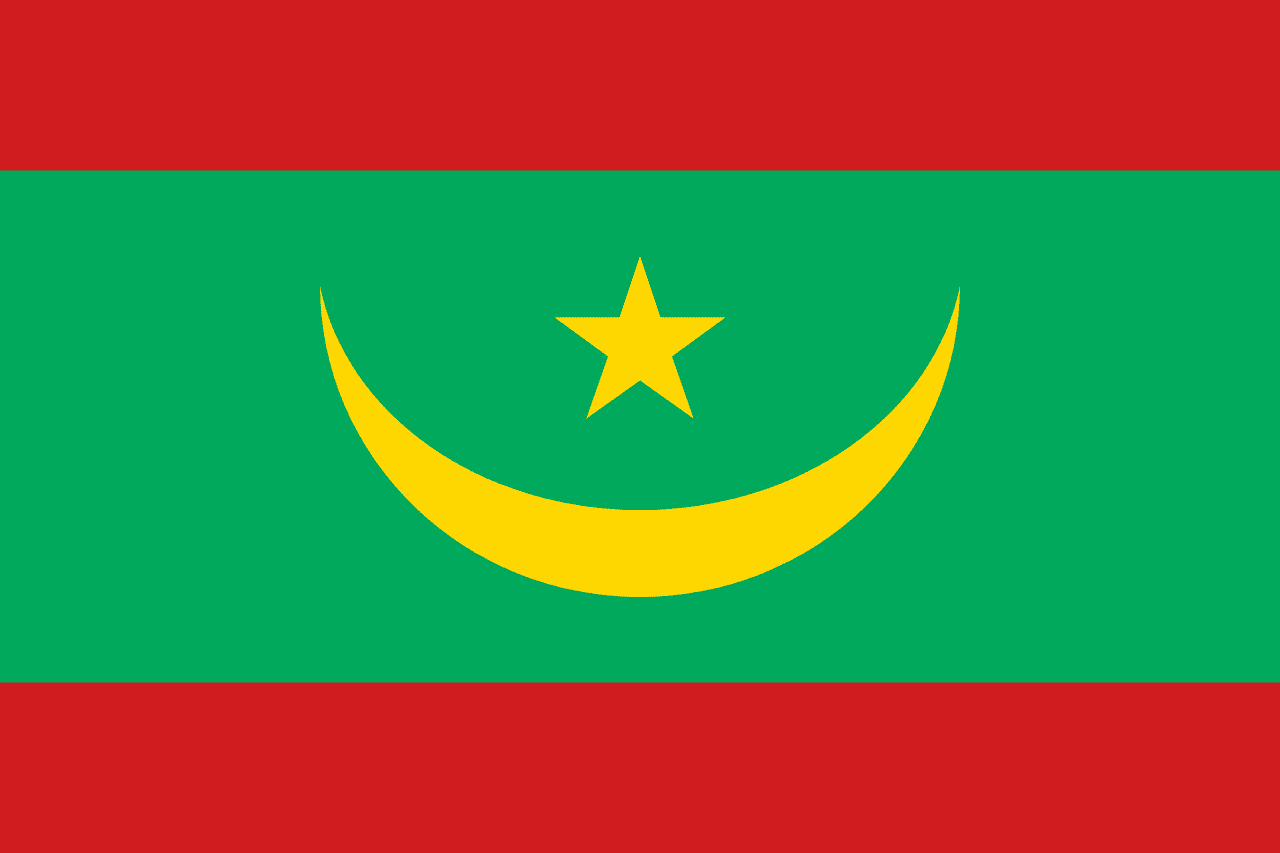
Mauritania
Adopted 2017
A green field with yellow crescent and star, bordered by red stripes at top and bottom, representing Mauritania's Islamic identity, the Sahara Desert, and the blood of those who defended the nation.
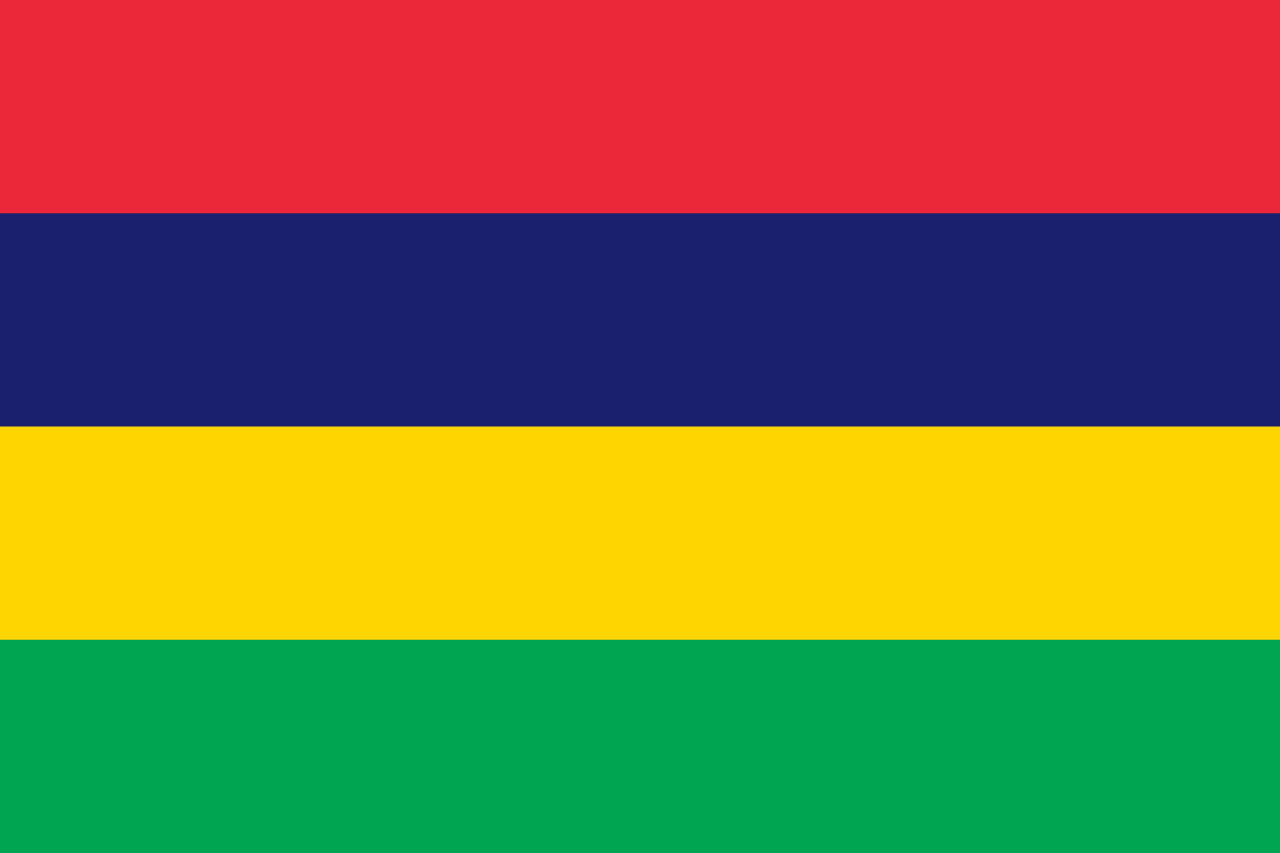
Mauritius
Adopted 1968
Four horizontal stripes of red, blue, yellow, and green representing the struggle for independence, the Indian Ocean, the bright future, and the lush vegetation of this successful island democracy.

Morocco
Adopted 1915
A red field with a green interlaced pentagram (Seal of Solomon) in the center. The flag reflects Morocco’s dynastic traditions and Islamic heritage.
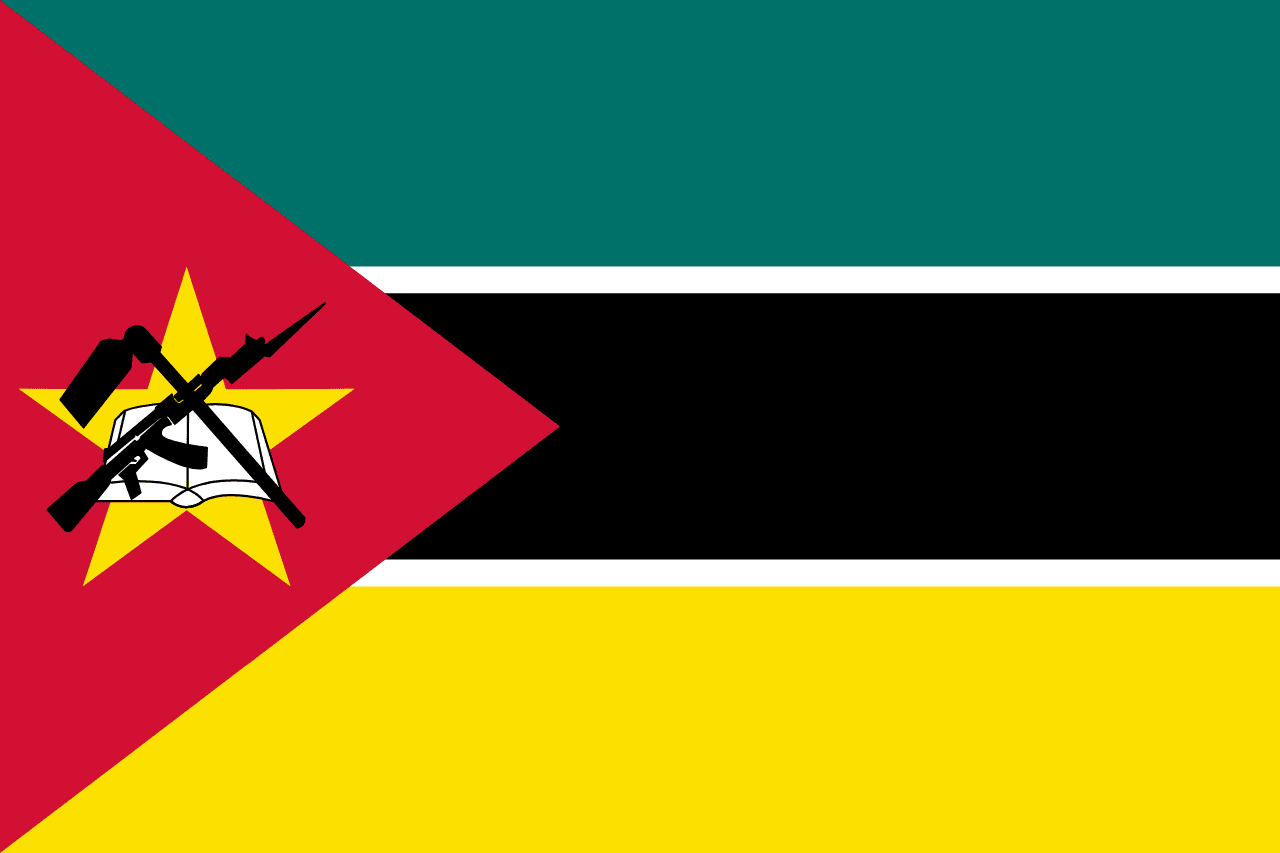
Mozambique
Adopted 1983
A horizontal tricolor of green, black, and yellow, separated by white fimbriations, with a red triangle at the hoist bearing a yellow star, a book, a hoe, and an AK-47 with bayonet. The flag uniquely features a modern weapon as a national symbol.
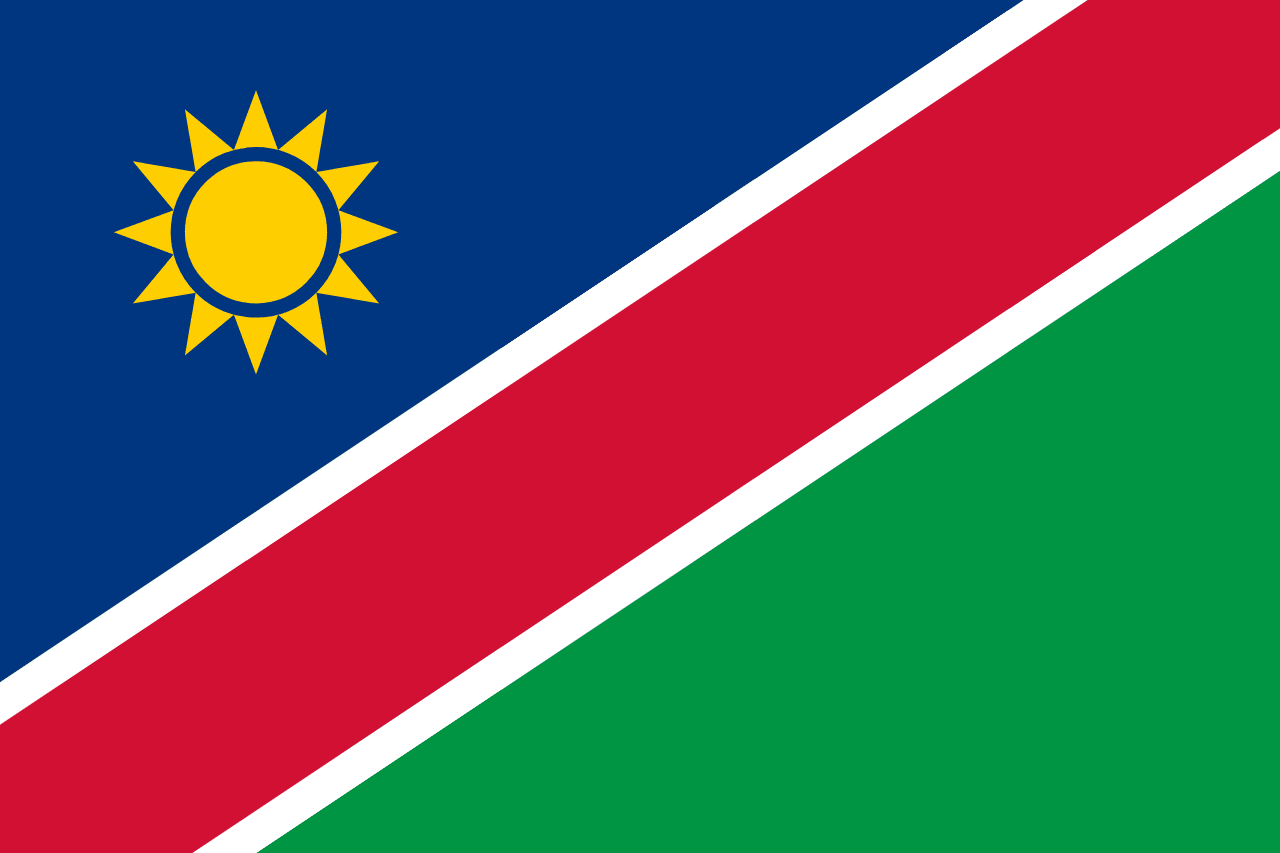
namibia
Adopted 1990
A diagonal tricolor divided from the lower hoist to upper fly by a red band with white borders, with blue in the upper hoist containing a golden sun, and green in the lower fly. The design symbolizes Namibia’s land, people, and resources.
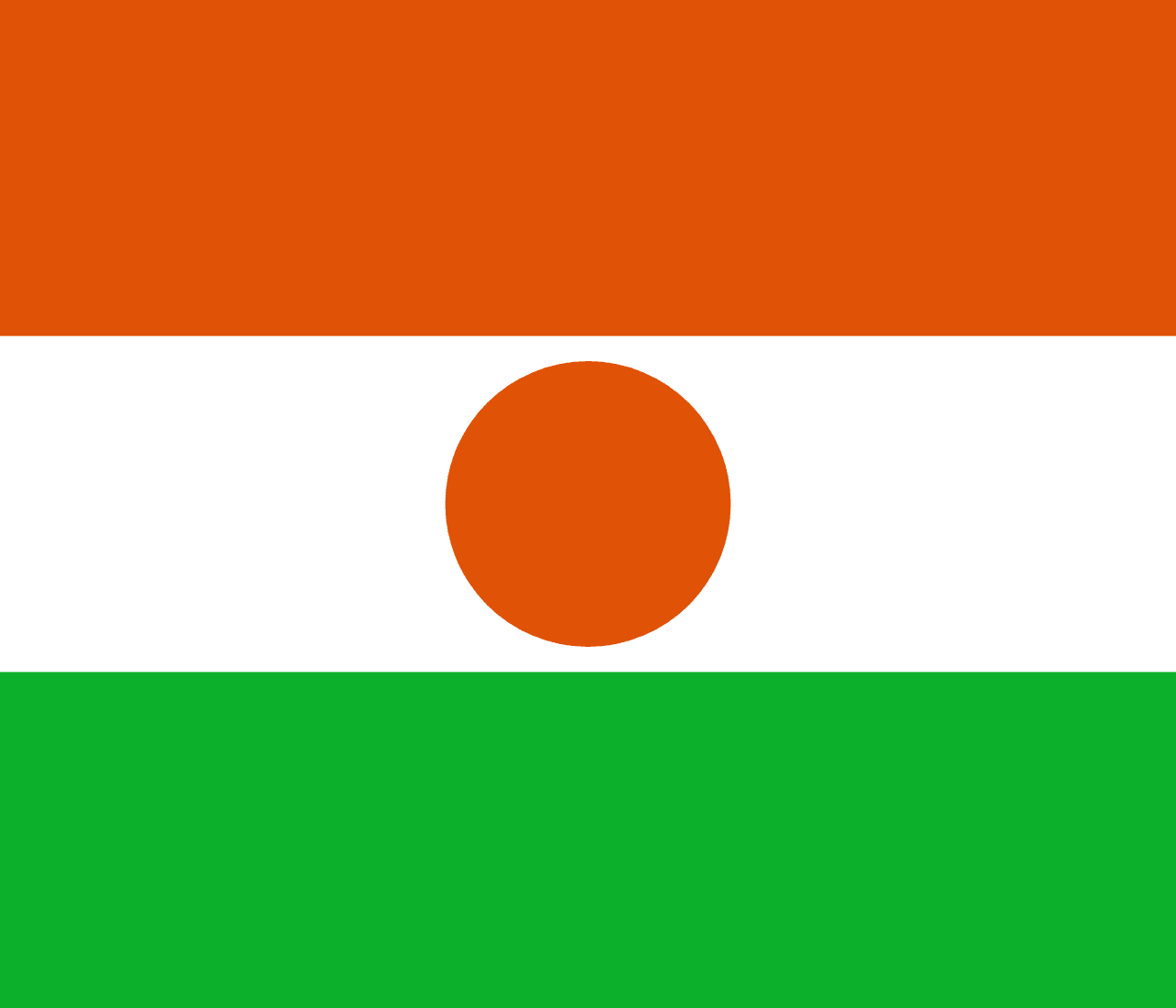
Niger
Adopted 1959
Three horizontal stripes of orange, white, and green with an orange circle centered on the white stripe, representing the Sahara Desert, the Niger River, and the fertile south, with the sun symbolizing hope and determination.
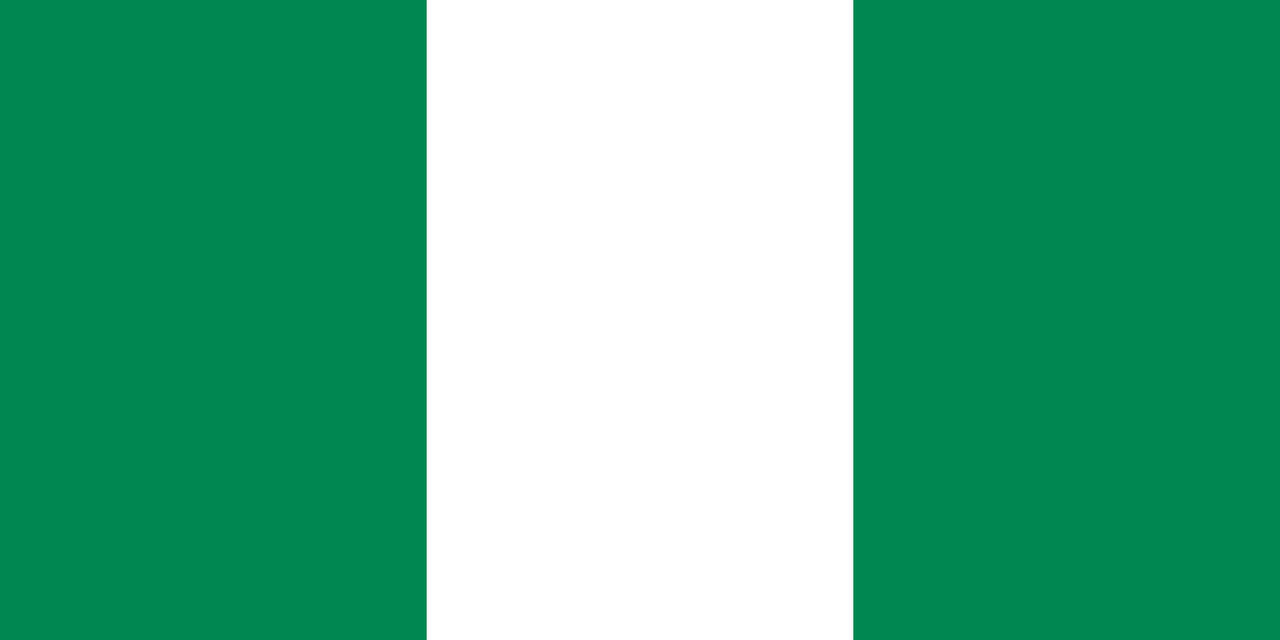
Nigeria
Adopted 1960
A vertical tricolor of green, white, and green. The flag was adopted at independence in 1960 and represents agriculture, unity, and peace.
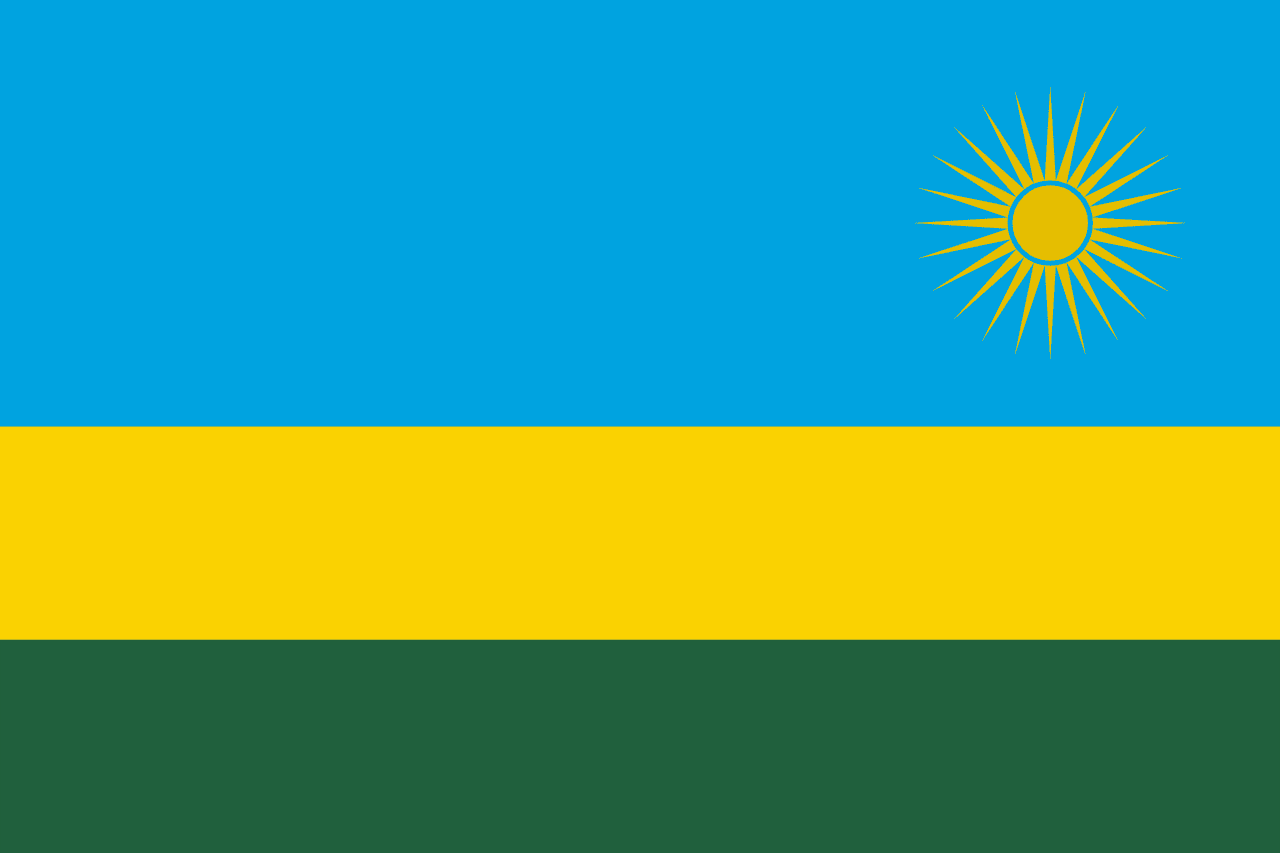
Rwanda
Adopted 2001
A tricolor of blue, yellow, and green bands with a golden sun in the upper fly corner. Adopted in 2001, the flag symbolizes unity, hope, and a new era of peace following the 1994 genocide.
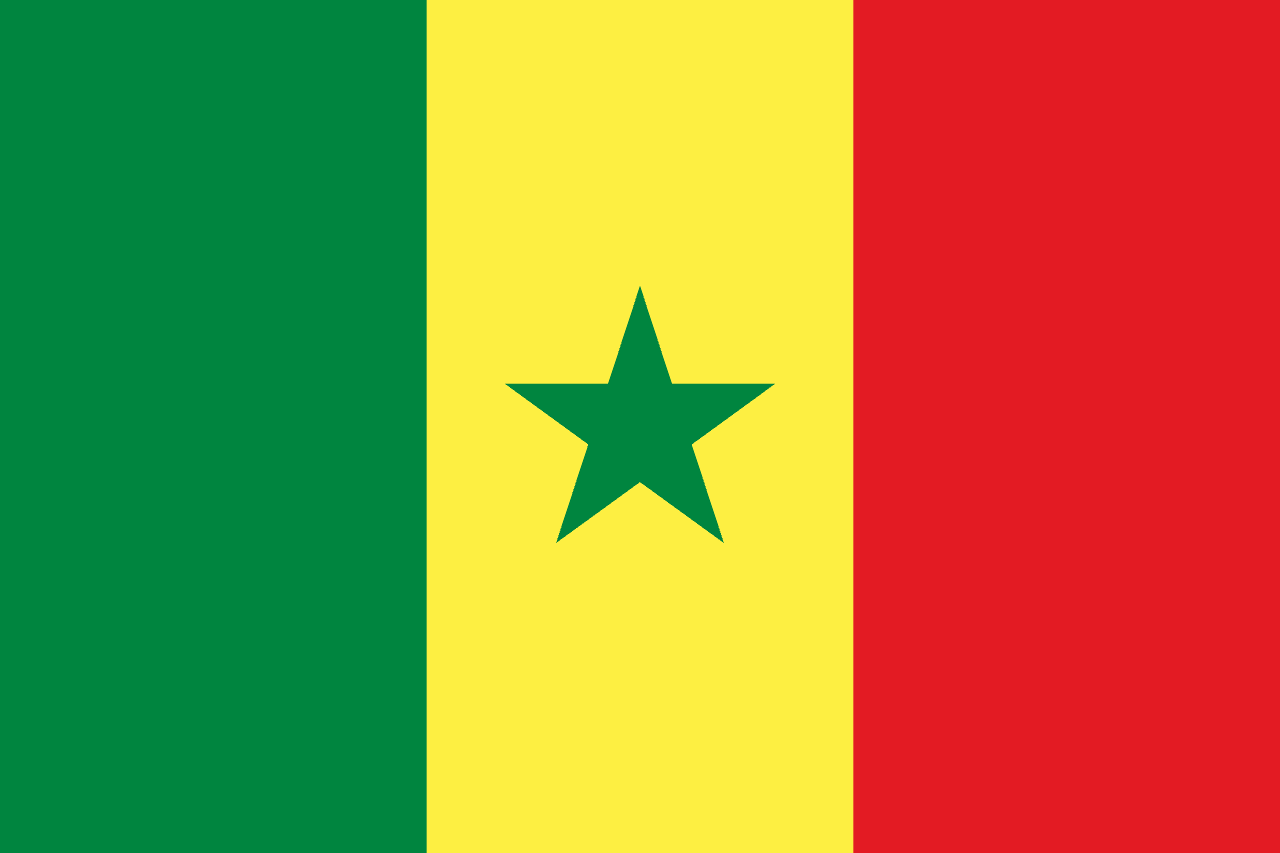
Senegal
Adopted 1960
A vertical tricolor of green, yellow, and red with a green five-pointed star centered in the yellow band. The flag reflects Pan-African identity and national unity.
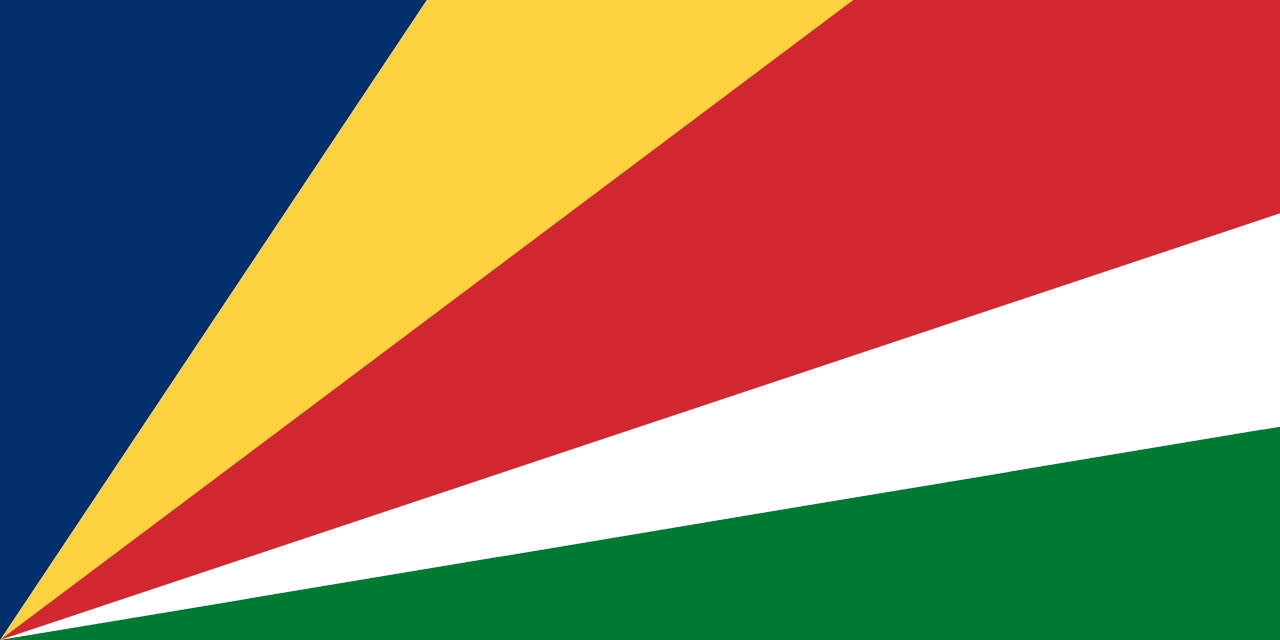
Seychelles
Adopted 1996
A flag of five oblique bands radiating from the bottom hoist corner: blue, yellow, red, white, and green. The design symbolizes a dynamic, forward-looking nation embracing unity and diversity.
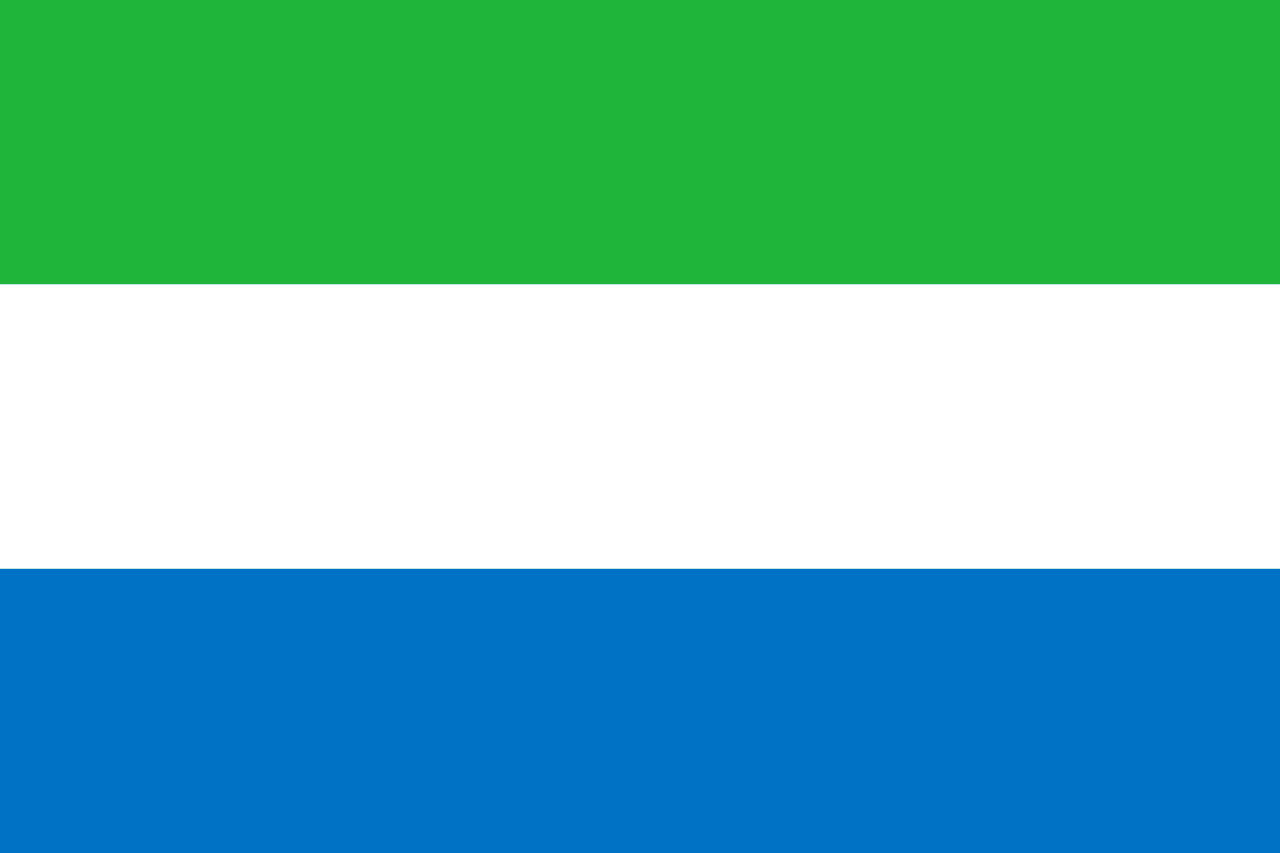
Sierra Leone
Adopted 1961
A horizontal tricolor of green, white, and blue, symbolizing the land, unity and justice, and the sea and hope, adopted at independence in 1961.
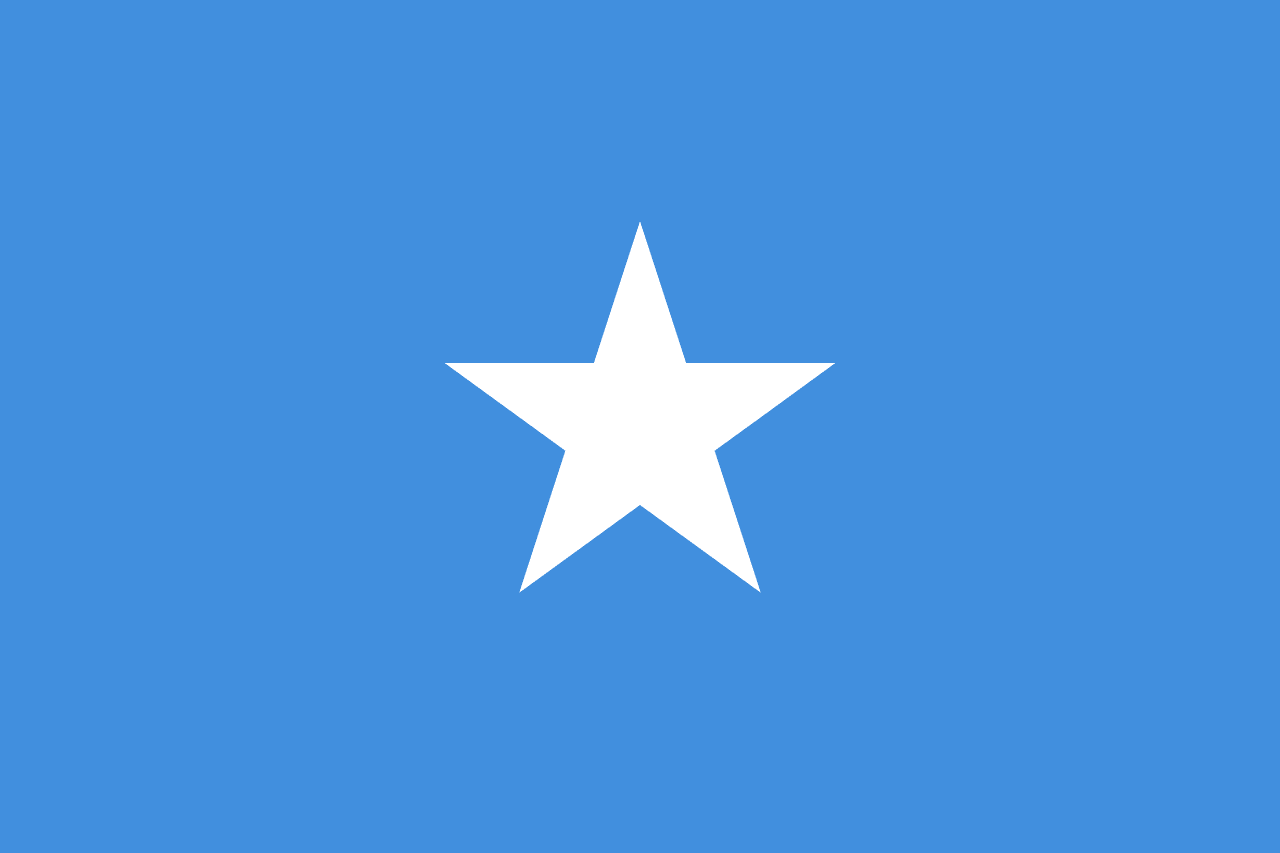
Somalia
Adopted 2012
A light blue field with a white five-pointed star in the center, representing the United Nations that helped Somalia achieve independence, the sky and Indian Ocean surrounding the Horn of Africa, and the five historical regions of Greater Somalia united under one symbol.
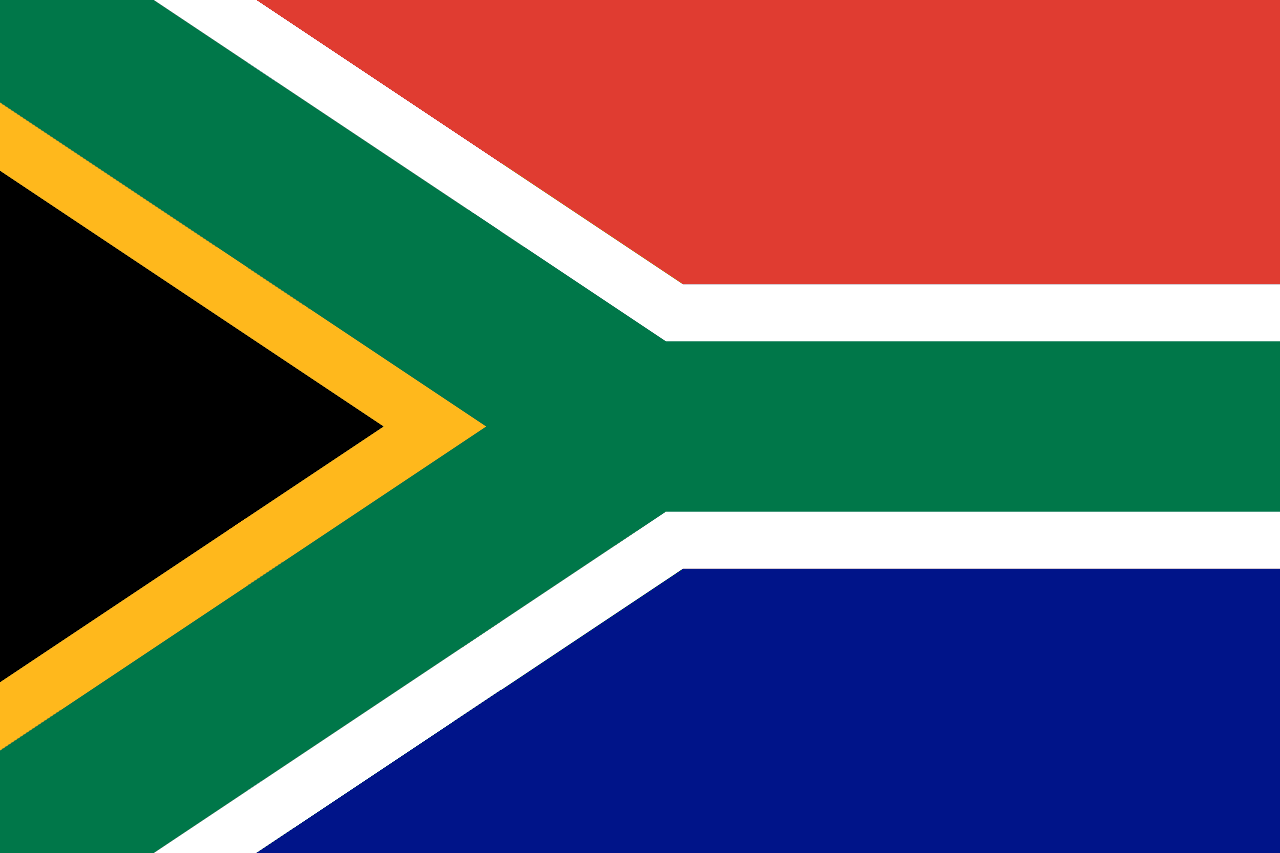
South Africa
Adopted 1994
A Y-shaped design with six colors converging toward the flag pole, representing the convergence of diverse elements in South African society and the country's path forward as a unified nation after the end of apartheid and the transition to democracy.
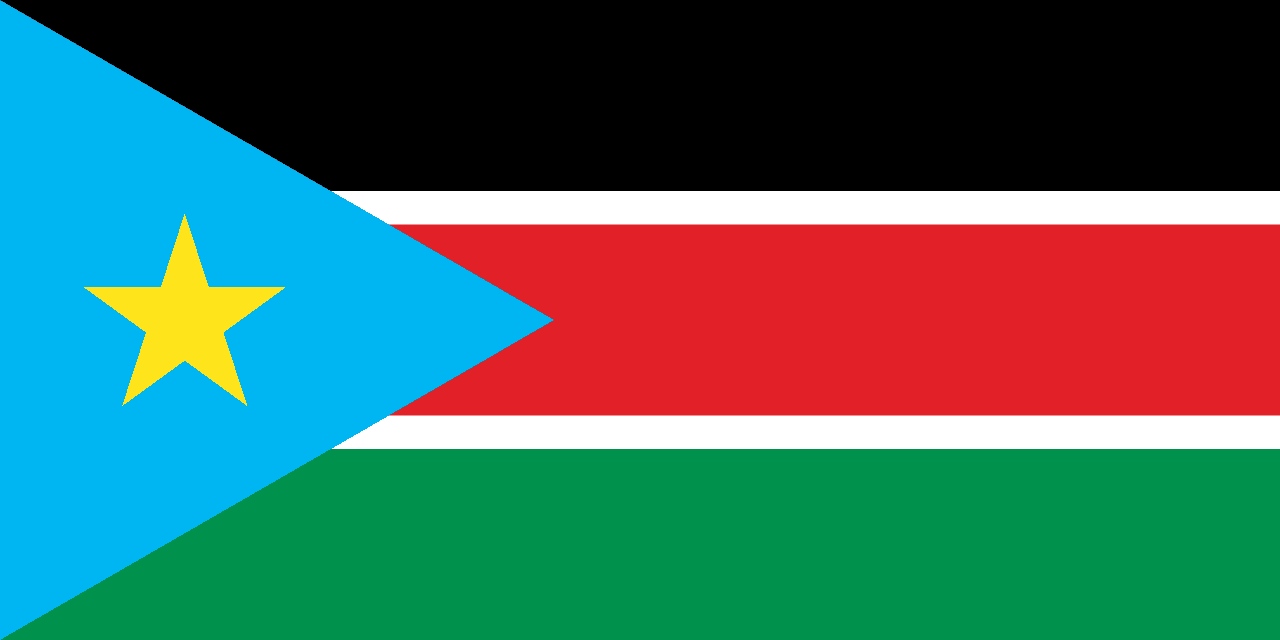
South Sudan
Adopted 2011
Three horizontal stripes of black, red, and white with a blue triangle at the hoist containing a yellow star, representing the African people, the blood shed for freedom, peace, the Nile River, and the unity of the states, designed for the world's newest country upon independence in 2011.
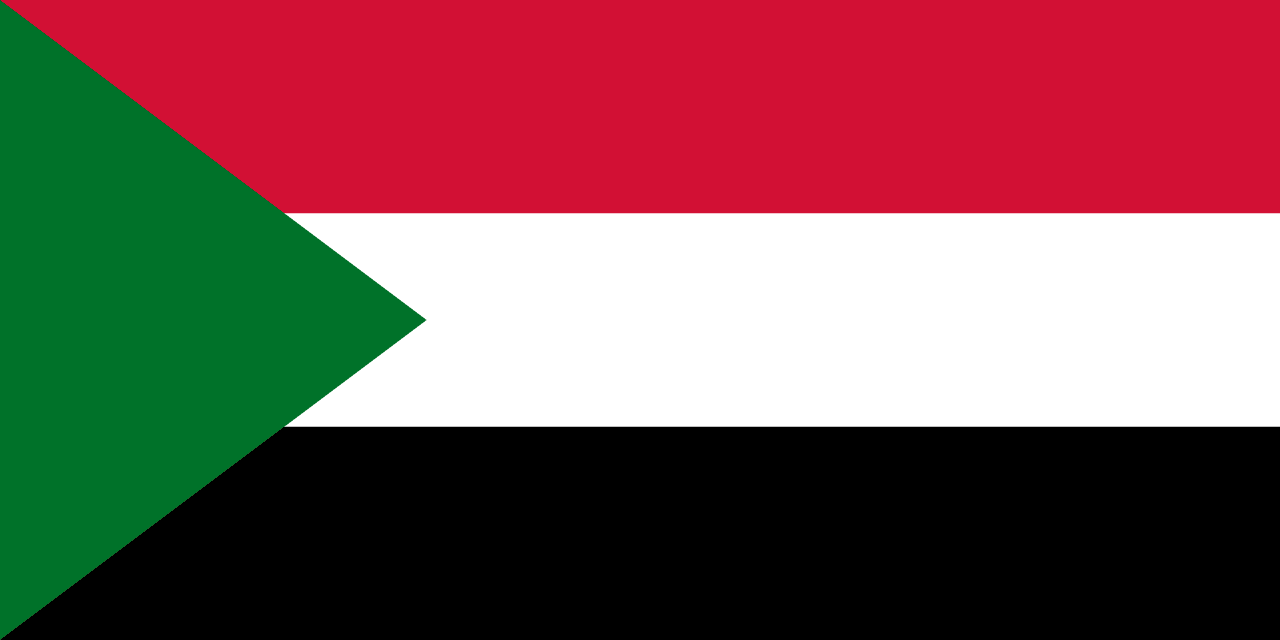
Sudan
Adopted 1970
Three horizontal stripes of red, white, and black with a green triangle at the hoist, representing the Pan-Arab colors of the struggle for independence, the blood shed for freedom, peace and light, the battles against oppression, and the prosperity and agriculture of Sudan.
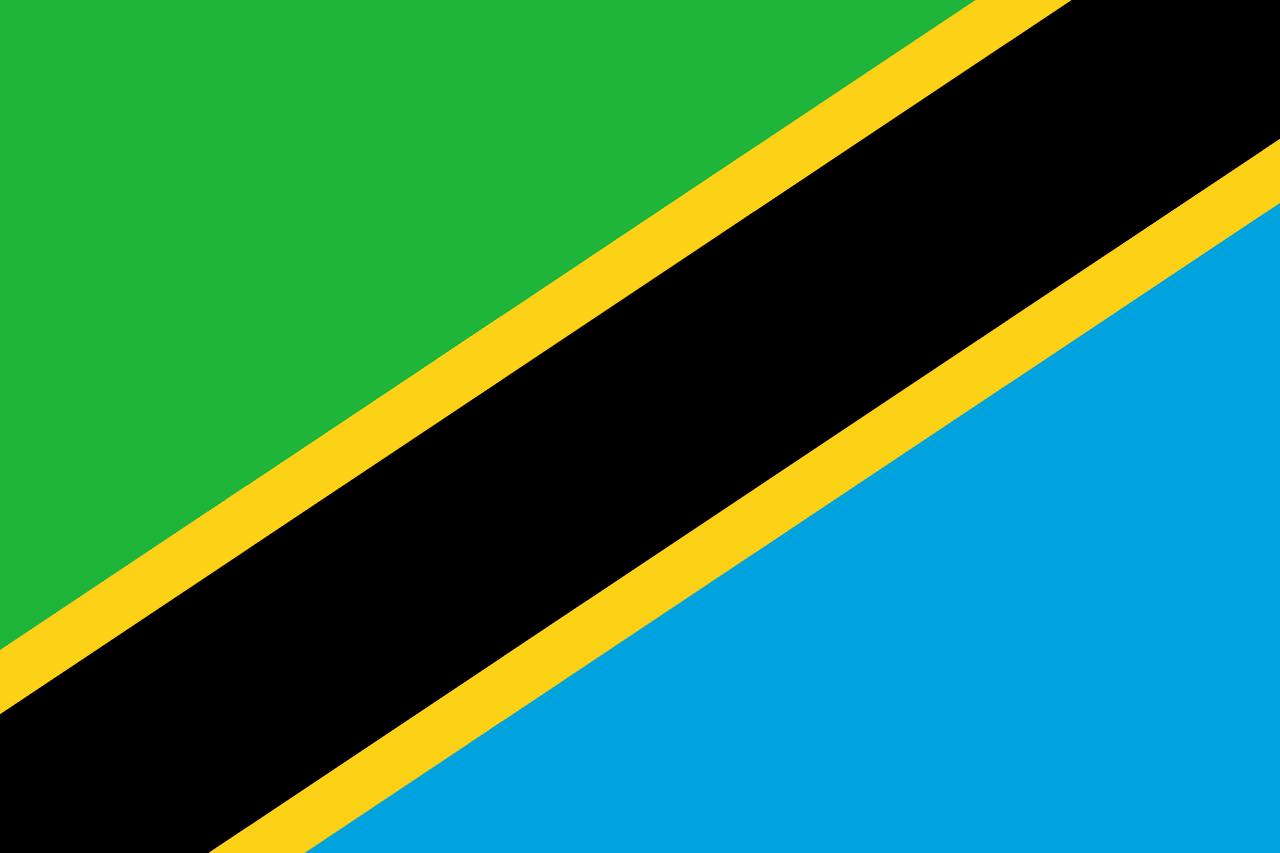
Tanzania
Adopted 1964
A green triangle in the upper hoist, a blue triangle in the lower fly, separated by a diagonal black stripe bordered by yellow stripes, representing the country's agriculture and forests, mineral wealth, the African people, and the Indian Ocean, symbolizing the union of Tanganyika and Zanzibar.
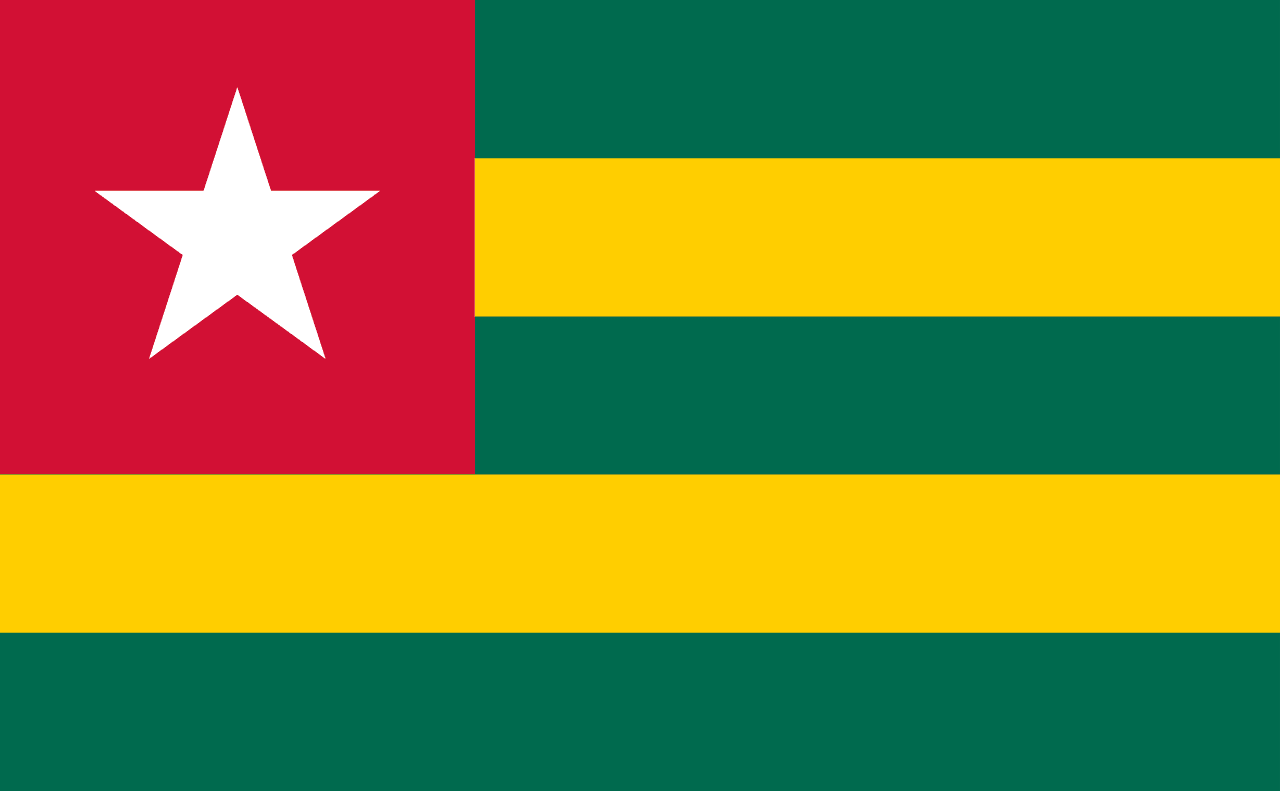
Togo
Adopted 1960
Five horizontal stripes alternating green and yellow with a blue canton containing a white five-pointed star, representing the country's forests and agriculture, mineral wealth, the blood shed for independence, hope and purity, and the unity of the Togolese people under one star.
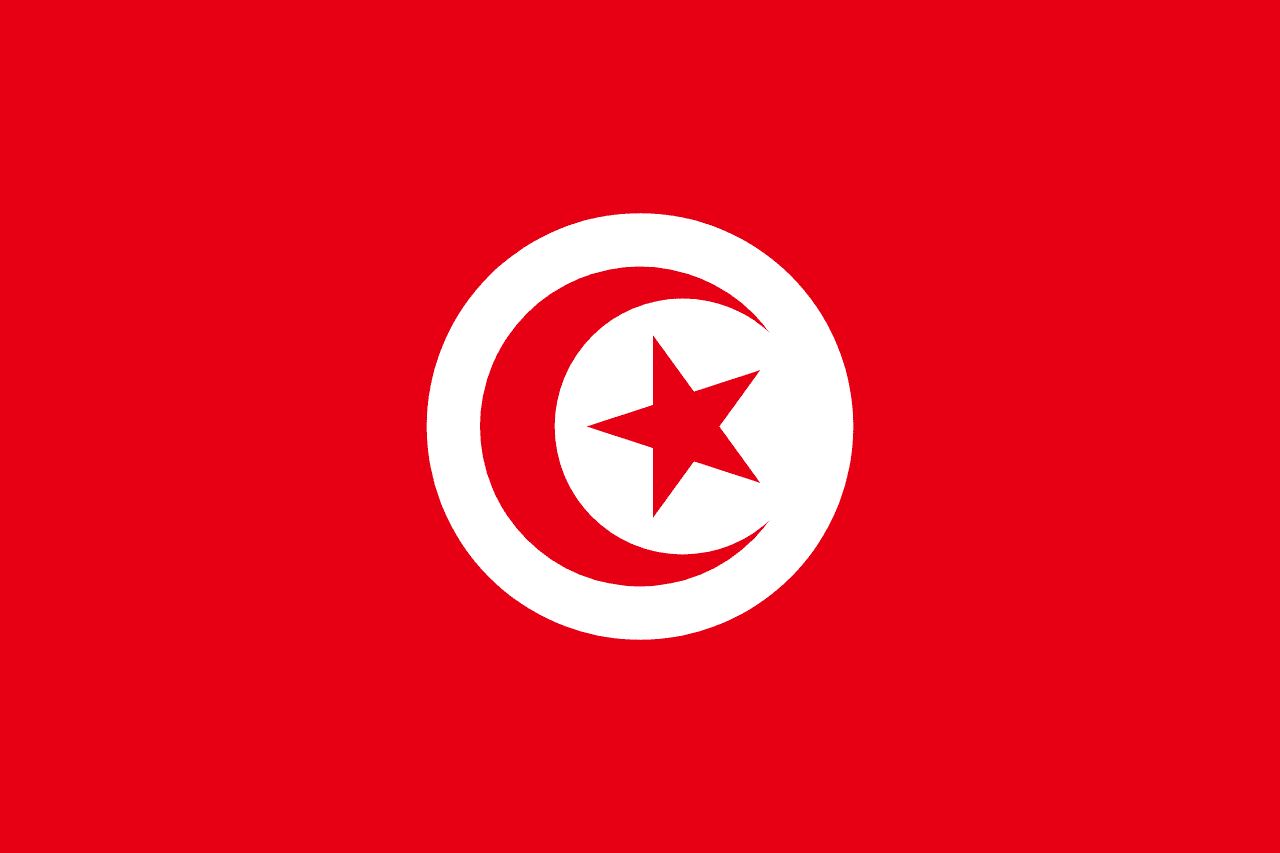
Tunisia
Adopted 1959
A red field with a white circle in the center containing a red crescent moon and five-pointed star, representing the blood shed for independence, purity and peace, Islam, and the unity of all Muslims, based on the Ottoman flag but with distinct Tunisian characteristics.
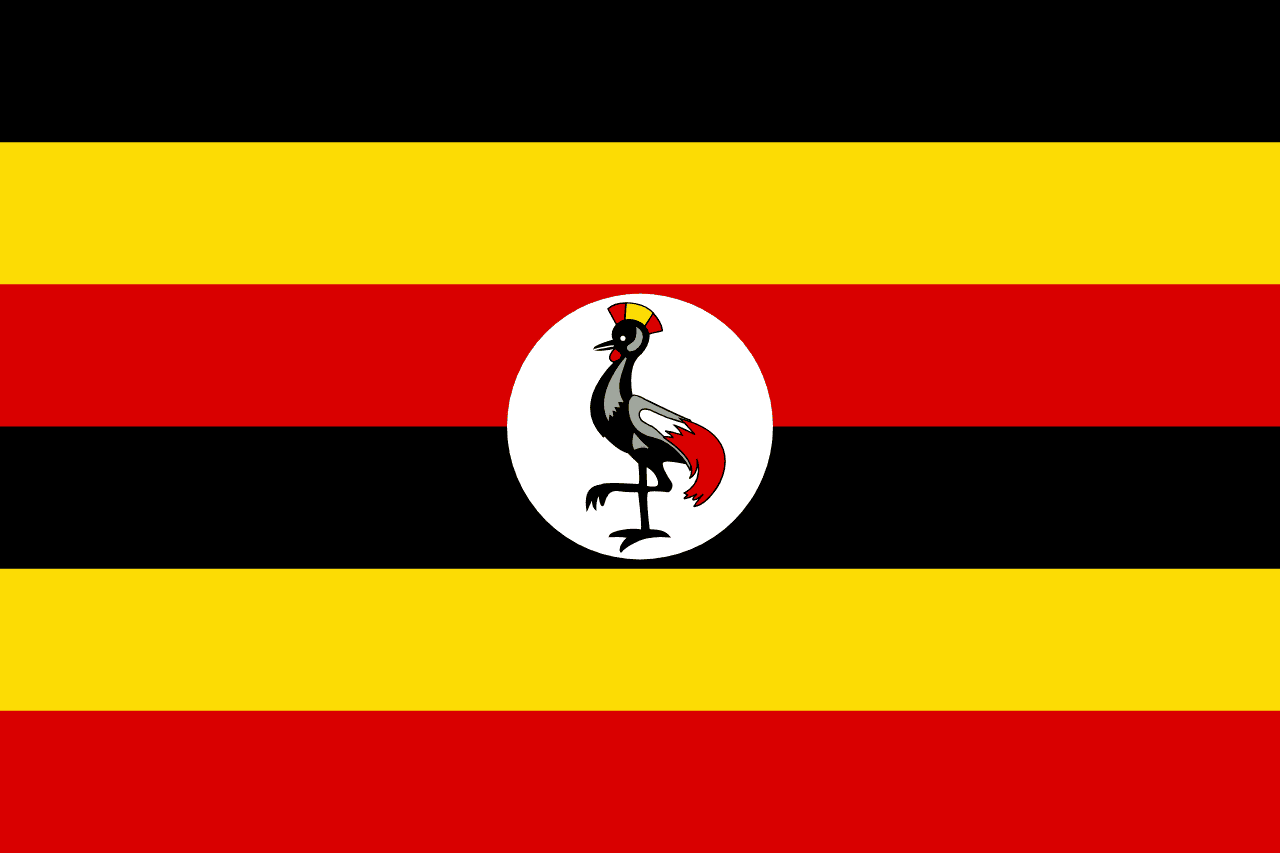
Uganda
Adopted 1962
Six horizontal stripes alternating black, yellow, and red (repeated twice) with a white circle containing the grey crowned crane in the center, representing the African people, sunshine and prosperity, brotherhood and unity, and the national bird that symbolizes Uganda's forward movement.
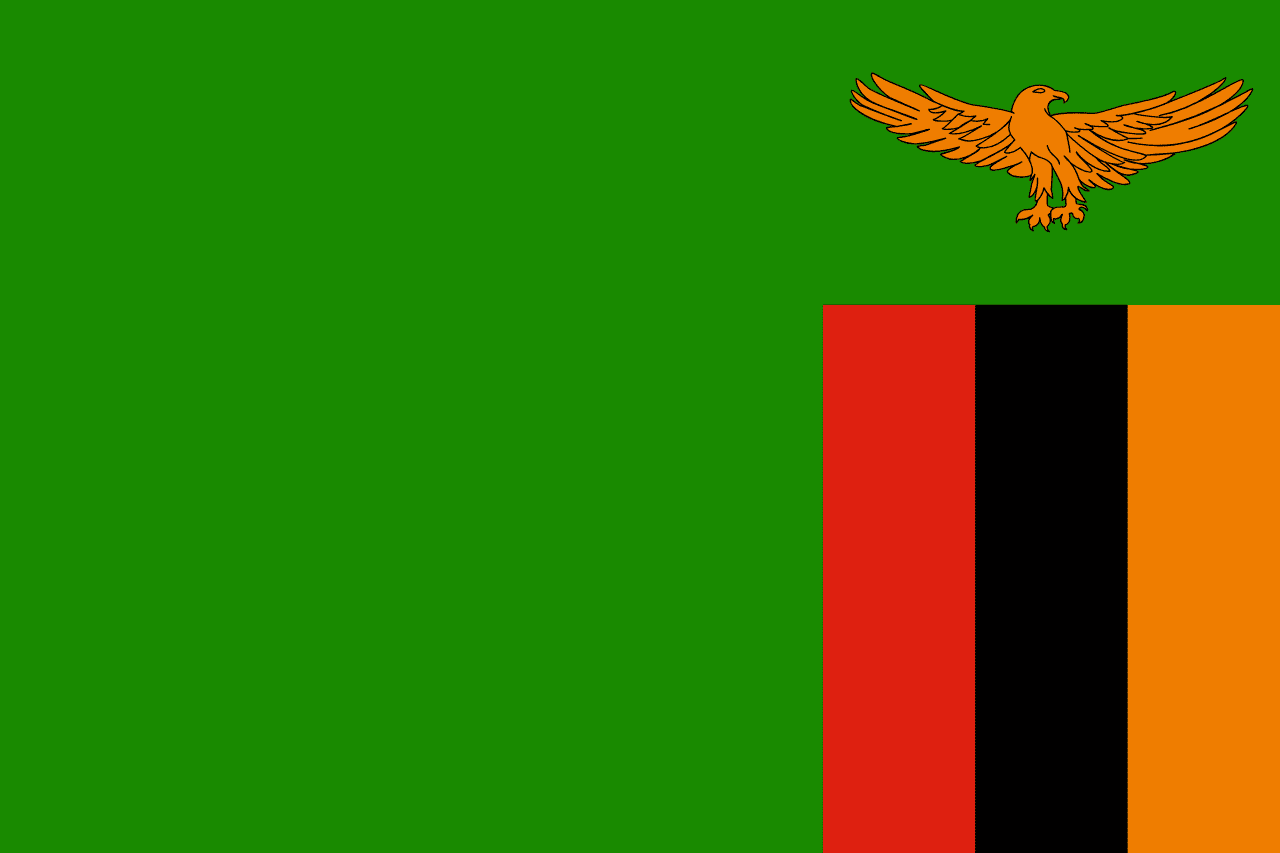
Zambia
Adopted 1964
A green field with three vertical stripes of red, black, and orange in the lower right corner and an orange eagle above the stripes, representing the country's natural wealth, the struggle for freedom, the African heritage, the mineral wealth (particularly copper), and the ability to rise above problems.
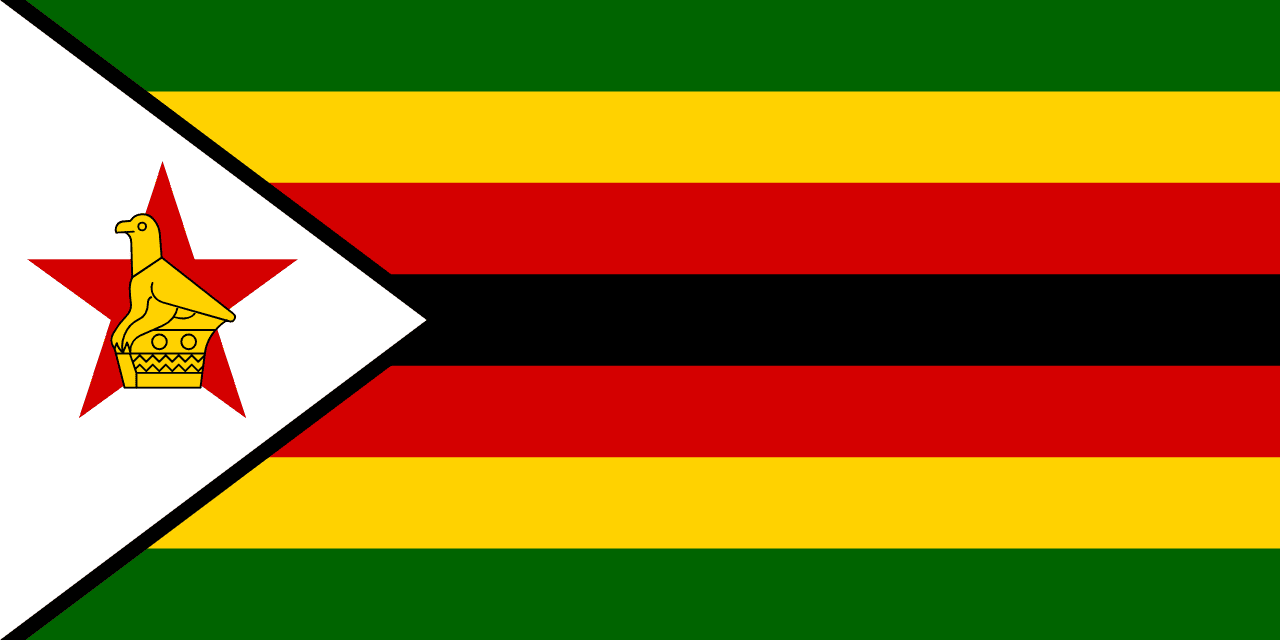
Zimbabwe
Adopted 1980
Seven horizontal stripes alternating green, yellow, red, black, red, yellow, green with a white triangle at the hoist containing a red five-pointed star and the Zimbabwe Bird, representing the nation's agricultural wealth, mineral resources, blood shed for independence, the African people, peace, and the ancient civilization of Great Zimbabwe.
About African Flags
Pan-African Colors
Many African flags feature red, gold, and green. Colors representing the blood shed for independence, mineral wealth, and fertile land. Ethiopia's flag inspired this color scheme.
Independence Era
Most African flags were adopted during the 1960s independence movement. Countries often chose symbols that rejected colonial heritage while celebrating African identity.
Unique Designs
From South Africa's Y-shape representing unity to Seychelles' radiating stripes symbolizing progress, African flags feature some of the world's most distinctive designs.